Search Result
Results for "
deficiency
" in MedChemExpress (MCE) Product Catalog:
5
Biochemical Assay Reagents
39
Isotope-Labeled Compounds
| Cat. No. |
Product Name |
Target |
Research Areas |
Chemical Structure |
-
- HY-130078
-
-
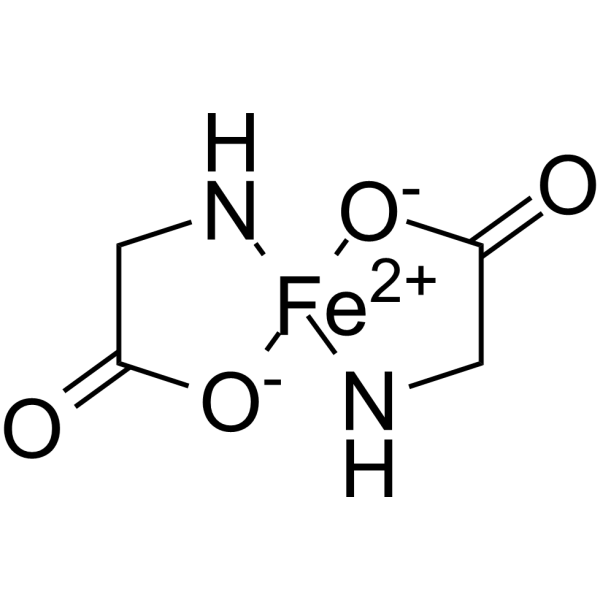
-
- HY-113409
-
|
|
Endogenous Metabolite
|
Metabolic Disease
|
|
3-Hydroxyisovaleric acid is a normal endogenous metabolite excreted in the urine. The urinary excretion of 3-hydroxyisovaleric acid is early and sensitive indicator of biotin deficiency .
|
-

-
- HY-N9941
-
|
|
Endogenous Metabolite
|
Metabolic Disease
|
|
2,8-Dihydroxyadenine, an endogenous metabolite, can cause the formation of urinary crystals and kidney stones. 2,8-Dihydroxyadenine can be used to diagnose adenine phosphoribosyltransferase (APRT) deficiency .
|
-
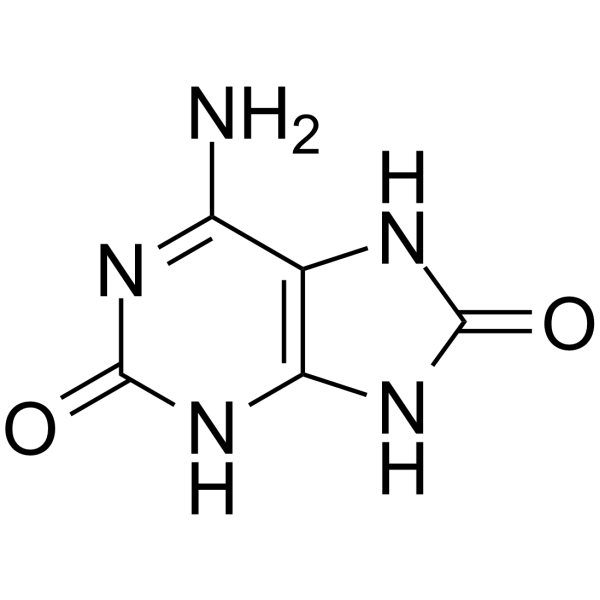
-
- HY-105541
-
|
TATD
|
Others
|
Others
|
|
Octotiamine (TATD) is a vitamin B1 analogue, a component of vitamin complex. Octotiamine can be used for the research of vitamin B1 deficiency .
|
-
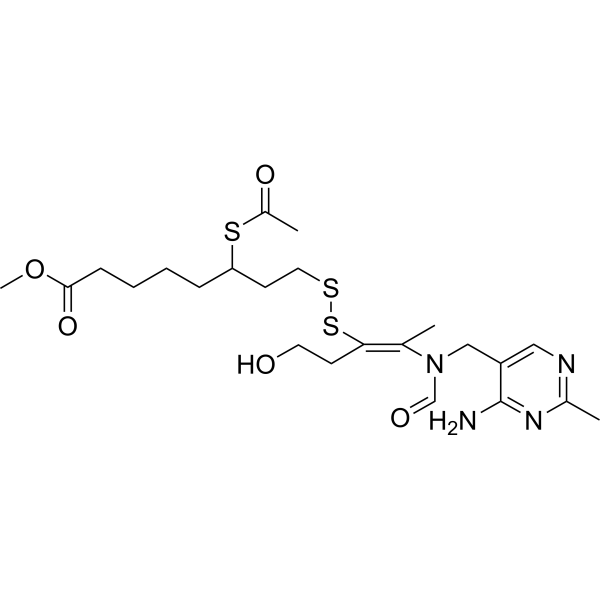
-
- HY-113256
-
|
|
Others
|
Metabolic Disease
|
|
Linoleyl carnitine is an acylcarnitine used to study long-chain 3-hydroxyacyl-CoA dehydrogenase deficiency and fatty acid oxidation disorders in fibroblasts .
|
-

-
- HY-108017
-
|
|
Others
|
Metabolic Disease
|
|
Ferric maltol is an orally active complex of a single ferric ion (Fe 3+). Ferric maltol has tha potential for iron deficiency anemia treatment in inflammatory bowel disease .
|
-
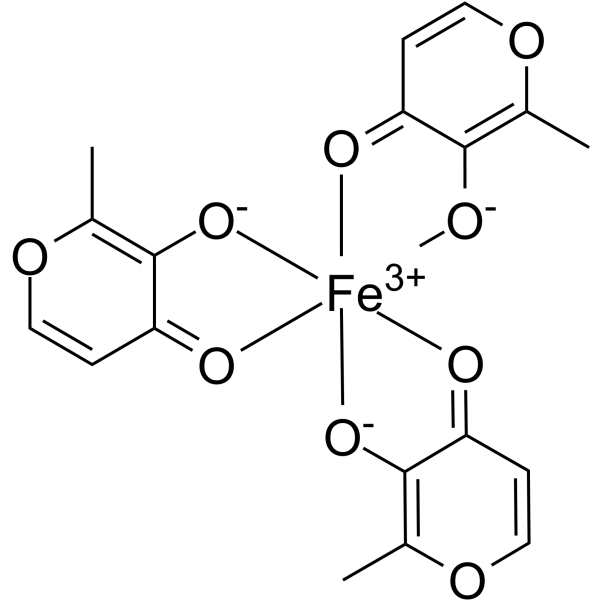
-
- HY-137808
-
|
Succinyl-CoA sodium
|
Endogenous Metabolite
|
Neurological Disease
Metabolic Disease
|
|
Succinyl-Coenzyme A (Succinyl-CoA) sodium is an intermediate of the citric acid cycle. Succinyl-Coenzyme A sodium can be converted to succinic acid and can also combines with glycine to form δ-ALA to synthesize porphyrins (heme). Succinyl-Coenzyme A sodium can be used in the study of metabolic, neurological and haematological abnormalities (such as porphyrias) caused by nutritional vitamin B12 deficiency (resulting in a deficiency in Succinyl-Coenzyme A synthesis) .
|
-
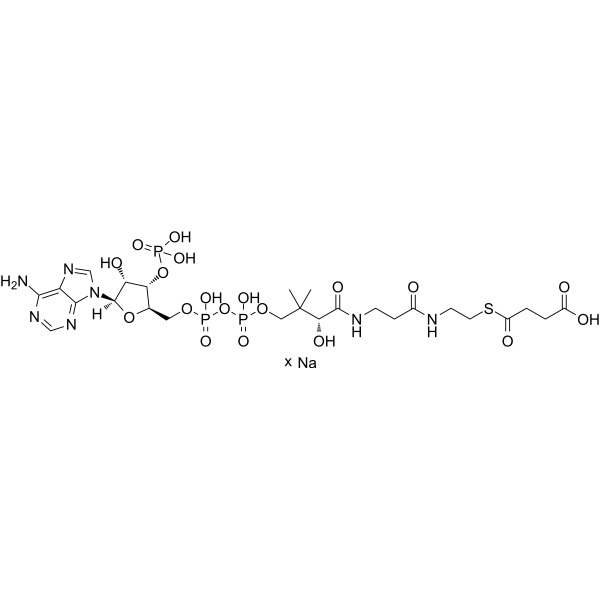
-
- HY-16637
-
|
Vitamin B9; Vitamin M
|
DNA/RNA Synthesis
Endogenous Metabolite
|
Neurological Disease
Cancer
|
|
Folic acid (Vitamin B9) is a orally active essential nutrient from the B complex group of vitamins. Folic acid shows antidepressant-like effect. Folic acid sodium reduces the risk of neonatal neural tube defects. Folic acid can be used to the research of megaloblastic and macrocytic anemias due to folic deficiency .
|
-
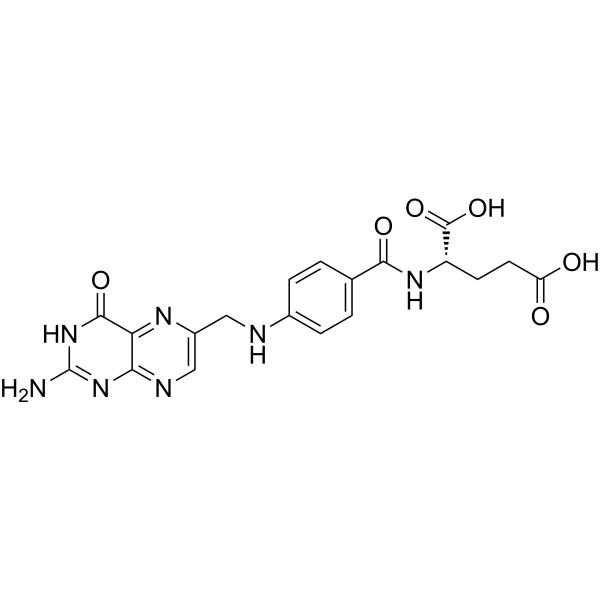
-
- HY-16637A
-
|
Vitamin B9 sodium; Vitamin M sodium
|
DNA/RNA Synthesis
Endogenous Metabolite
|
Neurological Disease
|
|
Folic acid (Vitamin B9) sodium is a orally active essential nutrient from the B complex group of vitamins. Folic acid sodium shows antidepressant-like effect. Folic acid sodium reduces the risk of neonatal neural tube defects. Folic acid sodium can be used to the research of megaloblastic and macrocytic anemias due to folic deficiency .
|
-
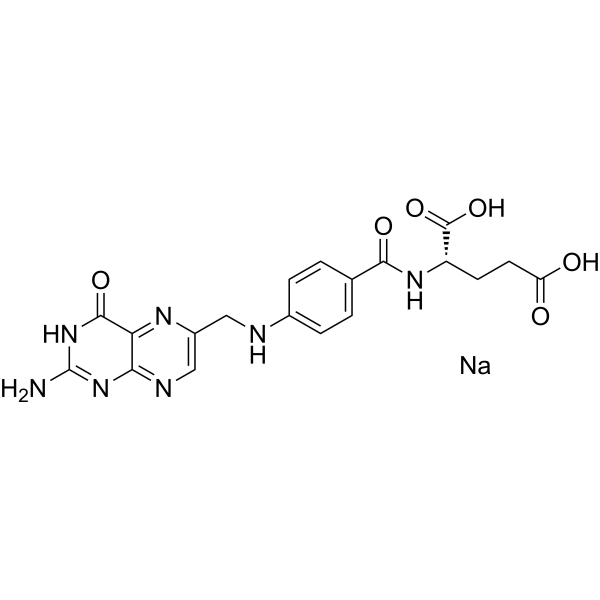
-
- HY-113013
-
|
β-Hydroxypyruvic acid; 3-Hydroxypyruvic acid
|
Endogenous Metabolite
|
Metabolic Disease
|
|
Hydroxypyruvic acid (β-Hydroxypyruvic acid) is an intermediate in the metabolism of glycine, serine and threonine. Hydroxypyruvic acid is a substrate for serine-pyruvate aminotransferase and glyoxylate reductase/hydroxypyruvate reductase. Hydroxypyruvic acid is involved in the metabolic disorder which is the dimethylglycine dehydrogenase deficiency pathway.
|
-
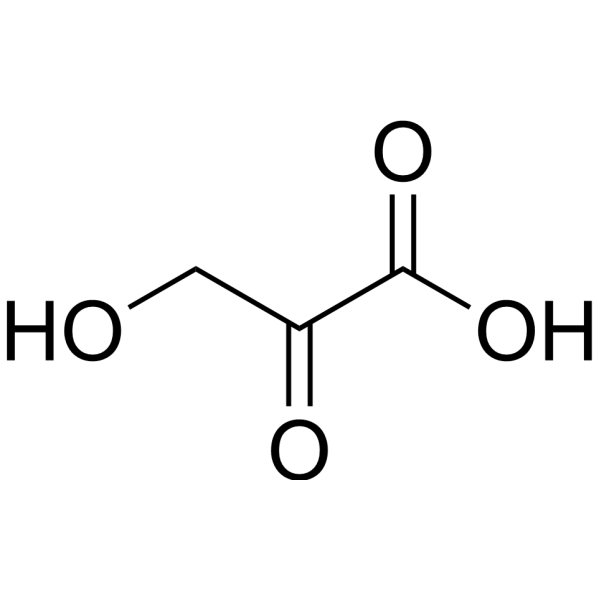
-
- HY-12689
-
|
AG-348
|
Pyruvate Kinase
|
Metabolic Disease
|
|
Mitapivat (AG-348) is an orally active pyruvate kinase allosteric activator. Mitapivat increases enzymatic activity, protein stability, and ATP levels over a broad range of PKLR genotypes, shows the potential to restore the activity of PK (pyruvate kinase)-deficient glycolytic pathways. Mitapivat can be used in study of PK deficiency .
|
-
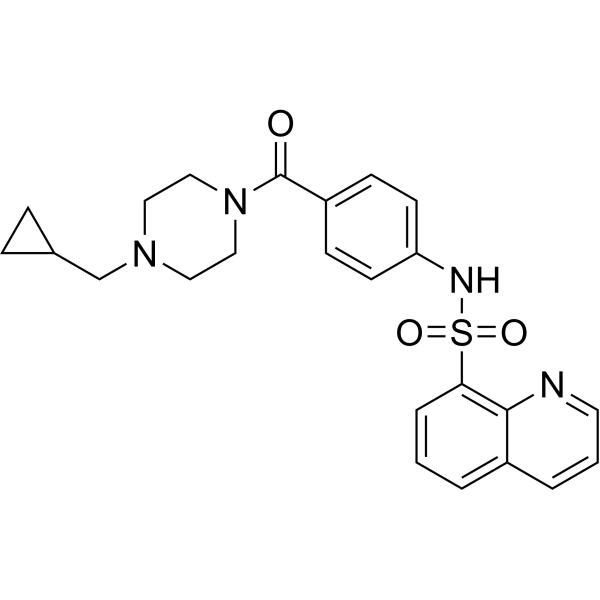
-
- HY-118861
-
|
(E)-Clomiphene; trans-Clomiphene; Enclomifene
|
Estrogen Receptor/ERR
|
Metabolic Disease
Endocrinology
|
|
Enclomiphene ((E)-Clomiphene) is a potent and orally active non-steroidal estrogen receptor antagonist, with antioestrogenic property. Enclomiphene can be used for the research of ovarian dysfunction, testosterone deficiency, male hypogonadism and type 2 diabetes .
|
-
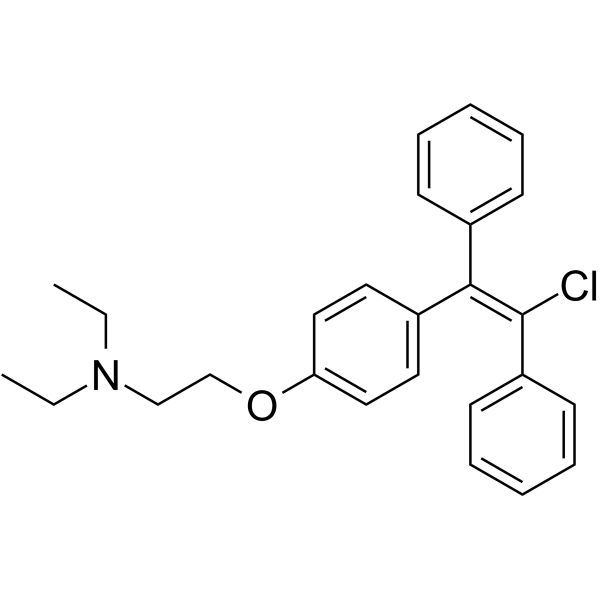
-
- HY-118861B
-
|
(E)-Clomiphene hydrochloride; trans-Clomiphene hydrochloride; Enclomifene hydrochloride
|
Estrogen Receptor/ERR
|
Metabolic Disease
Endocrinology
|
|
Enclomiphene ((E)-Clomiphene) hydrochloride is a potent and orally active non-steroidal estrogen receptor antagonist, with antioestrogenic property. Enclomiphene hydrochloride can be used for the research of ovarian dysfunction, testosterone deficiency, male hypogonadism and type 2 diabetes .
|
-
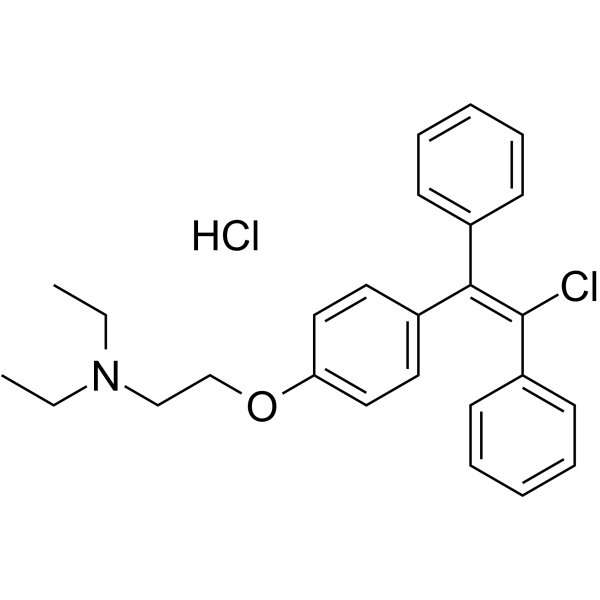
-
- HY-113013A
-
|
β-Hydroxypyruvic acid lithium hydrate; 3-Hydroxypyruvic acid lithium hydrate
|
Endogenous Metabolite
|
Metabolic Disease
|
|
Hydroxypyruvic acid lithium hydrate (β-Hydroxypyruvic acid lithium hydrate) is an intermediate in the metabolism of glycine, serine and threonine. Hydroxypyruvic acid lithium hydrate is a substrate for serine-pyruvate aminotransferase and glyoxylate reductase/hydroxypyruvate reductase. Hydroxypyruvic acid lithium hydrate is involved in the metabolic disorder which is the dimethylglycine dehydrogenase deficiency pathway.
|
-
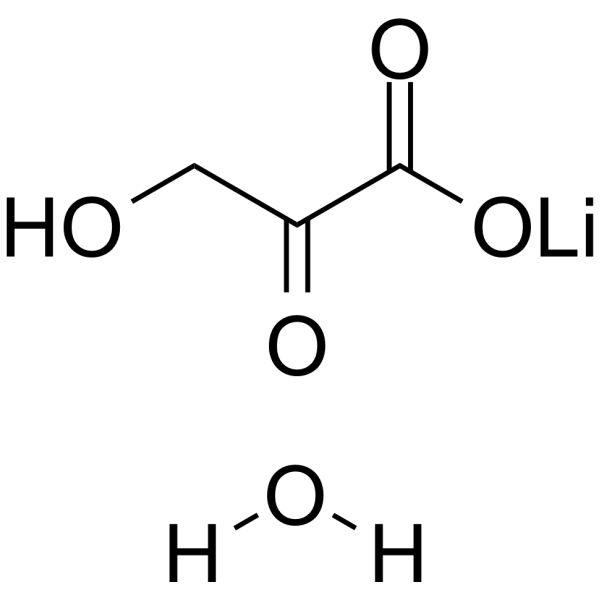
-
- HY-118861A
-
|
(E)-Clomiphene citrate; trans-Clomiphene citrate; Enclomifene citrate
|
Estrogen Receptor/ERR
|
Metabolic Disease
Endocrinology
|
|
Enclomiphene ((E)-Clomiphene) citrate is a potent and orally active non-steroidal estrogen receptor antagonist, with antioestrogenic property. Enclomiphene citrate can be used for the research of ovarian dysfunction, testosterone deficiency, male hypogonadism and type 2 diabetes .
|
-
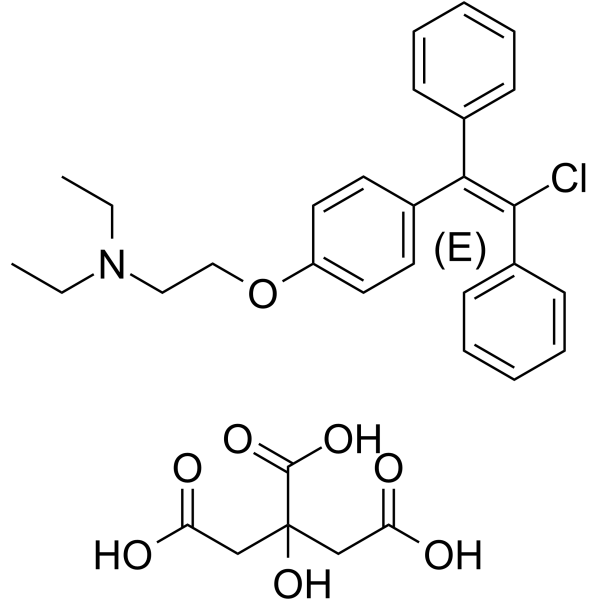
-
- HY-W096159
-
|
|
Endogenous Metabolite
|
Metabolic Disease
|
|
D-Biotinol is the nutrition of Lactobacillus arabinosus, L. casei, or Saccharomyces cerevisiae. D-Biotinol replaces the D-biotin (HY-B0511) in saving egg white induced biotin deficiency in rats. D-Biotinol is orally active and displays to be converted to biotin by rats .
|
-
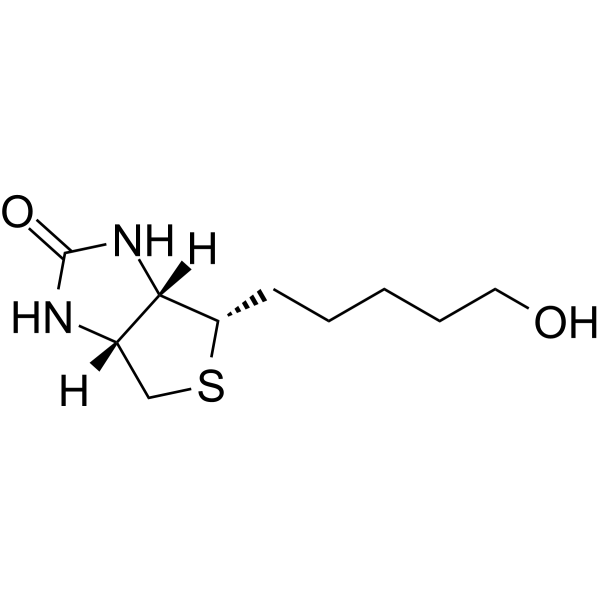
-
- HY-14759
-
|
PAZ-417
|
PAI-1
Amyloid-β
|
Neurological Disease
|
|
Aleplasinin is an orally active, potent, BBB-penetrated and selectiveSERPINE1 (PAI-1, Plasminogen activator inhibitor-1) inhibitor. Aleplasinin increases amyloid-β (Aβ) catabolism and ameliorates amyloid-related pathology. Aleplasinin improves memory deficiency. Aleplasinin can be used for Alzheimer's disease research .
|
-

-
- HY-W017522
-
|
|
Endogenous Metabolite
|
Metabolic Disease
|
|
Adipic acid is found to be associated with HMG-CoA lyase deficiency, carnitine-acylcarnitine translocase deficiency, malonyl-Coa decarboxylase deficiency, and medium Chain acyl-CoA dehydrogenase deficiency, which are inborn errors of metabolism.
|
-

-
- HY-N0384
-
|
Vanilacetic acid
|
Endogenous Metabolite
|
Metabolic Disease
|
|
Homovanillic acid is a dopamine metabolite found to be associated with aromatic L-amino acid decarboxylase deficiency, celiac disease, growth hormone deficiency, and sepiapterin reductase deficiency.
|
-
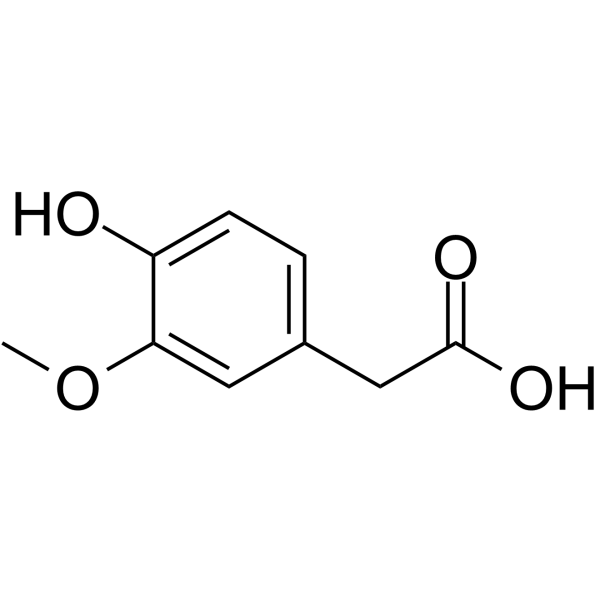
-
- HY-W017522S6
-
|
|
Isotope-Labeled Compounds
|
Metabolic Disease
|
|
Adipic acid- 13C2 is 13C labeled Adipic acid. Adipic acid is found to be associated with HMG-CoA lyase deficiency, carnitine-acylcarnitine translocase deficiency, malonyl-Coa decarboxylase deficiency, and medium Chain acyl-CoA dehydrogenase deficiency, which are inborn errors of metabolism.
|
-
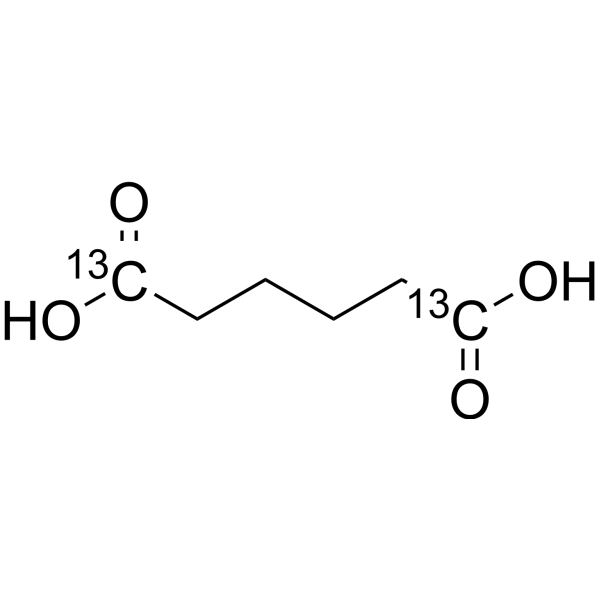
-
- HY-101193
-
|
Zn(II)-protoporphyrin IX; ZnPP; Zinc Protoporphyrin-9
|
Reactive Oxygen Species
Endogenous Metabolite
Apoptosis
|
Cardiovascular Disease
Metabolic Disease
Cancer
|
|
Zinc Protoporphyrin (Zn(II)-protoporphyrin IX) is an orally active and competitive heme oxygenase-1 (HO-1) inhibitor and markedly attenuates the protective effects of Phloroglucinol (PG) against H2O2 . Zinc Protoporphyrin is used as a screening marker of iron deficiency in individual pregnant women and children, but also to assess population iron status in combination with haemoglobin concentration . Zinc Protoporphyrin has anti-cancer activity .
|
-
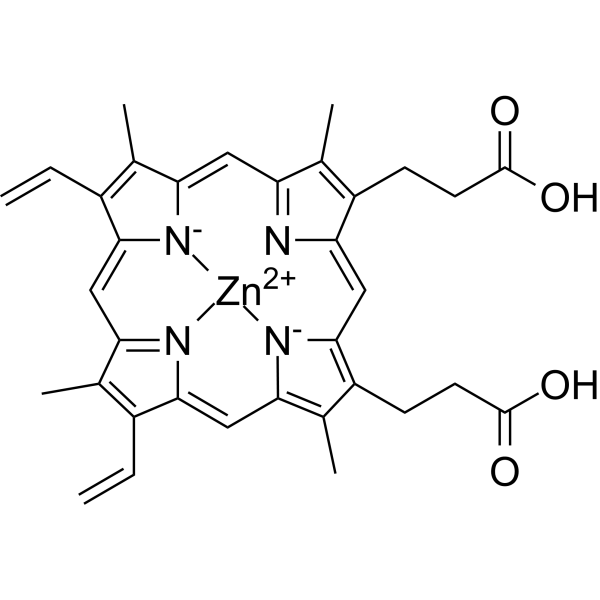
-
- HY-W017522S3
-
|
|
Endogenous Metabolite
|
Metabolic Disease
|
|
Adipic acid- 13C is the 13C labeled Adipic acid[1]. Adipic acid is found to be associated with HMG-CoA lyase deficiency, carnitine-acylcarnitine translocase deficiency, malonyl-Coa decarboxylase deficiency, and medium Chain acyl-CoA dehydrogenase deficiency, which are inborn errors of metabolism[2].
|
-
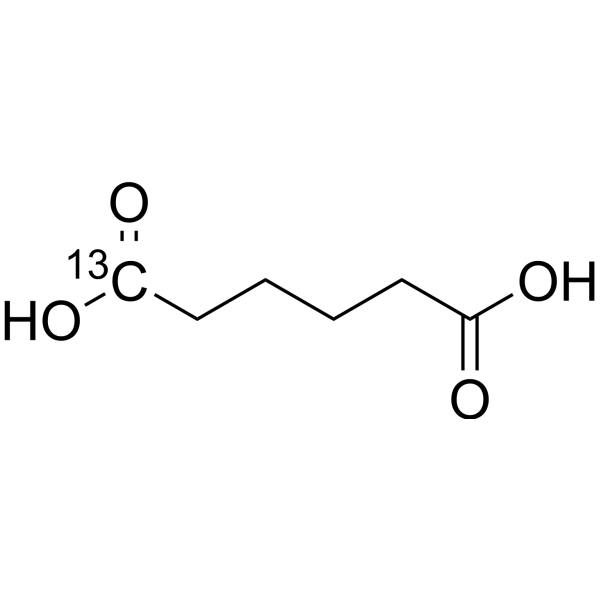
-
- HY-W015300
-
|
Octanedioic acid
|
Endogenous Metabolite
|
Metabolic Disease
|
|
Suberic acid (Octanedioic acid) is found to be associated with carnitine-acylcarnitine translocase deficiency, malonyl-Coa decarboxylase deficiency.
|
-
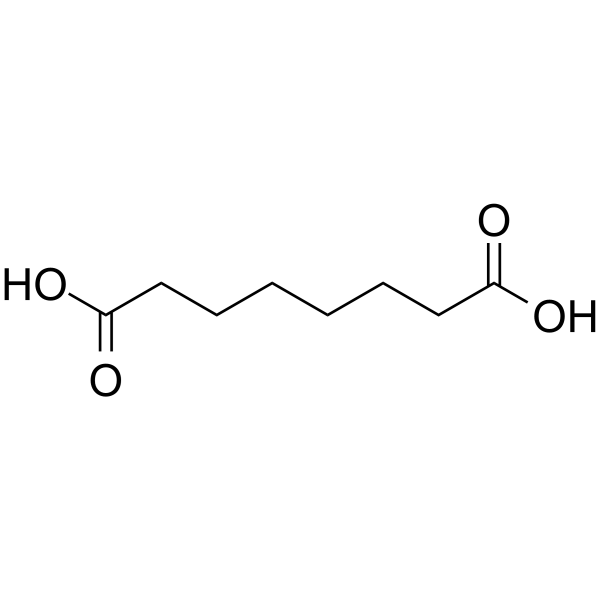
-
- HY-152200
-
|
|
HIV Protease
Reverse Transcriptase
|
Infection
Inflammation/Immunology
|
|
HIV-1 inhibitor-53 is a dual HIV-1 protease and reverse transcriptase inhibitor. HIV-1 inhibitor-53 inhibits HIV-1 protease (PR) and reverse transcriptase (RT) activity with IC50 values of 1.93 nM and 2.35 μM, respectively. HIV-1 inhibitor-53 can be used for the research of acquired immune deficiency syndrome (AIDS) .
|
-

-
- HY-N0384S2
-
|
Vanilacetic acid-d5
|
Endogenous Metabolite
|
Metabolic Disease
|
|
Homovanillic acid-d5 is the deuterium labeled Homovanillic acid. Homovanillic acid is a dopamine metabolite found to be associated with aromatic L-amino acid decarboxylase deficiency, celiac disease, growth hormone deficiency, and sepiapterin reductase deficiency.
|
-
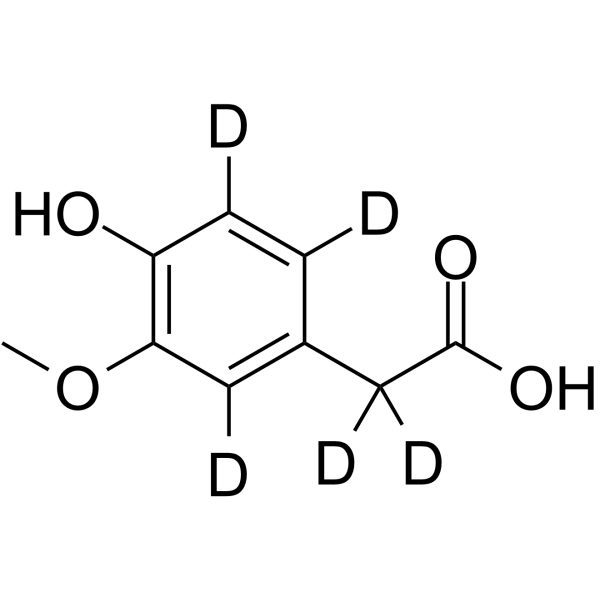
-
- HY-N0384S
-
|
Vanilacetic acid-d3
|
Endogenous Metabolite
|
Metabolic Disease
|
|
Homovanillic acid-d3 is the deuterium labeled Homovanillic acid. Homovanillic acid is a dopamine metabolite found to be associated with aromatic L-amino acid decarboxylase deficiency, celiac disease, growth hormone deficiency, and sepiapterin reductase deficiency.
|
-

-
- HY-N0384S1
-
|
Vanilacetic acid-d2
|
Endogenous Metabolite
|
Metabolic Disease
|
|
Homovanillic acid-d2 is the deuterium labeled Homovanillic acid. Homovanillic acid is a dopamine metabolite found to be associated with aromatic L-amino acid decarboxylase deficiency, celiac disease, growth hormone deficiency, and sepiapterin reductase deficiency.
|
-
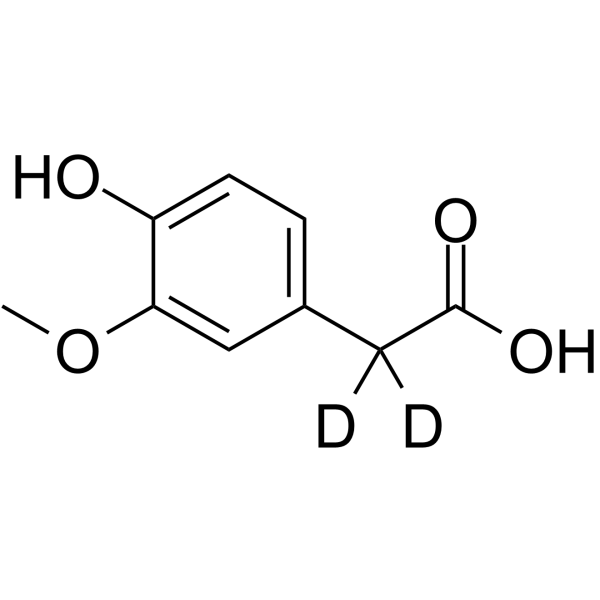
-
- HY-W015300S
-
|
Octanedioic acid-d4
|
Endogenous Metabolite
|
Metabolic Disease
|
|
Suberic acid-d4 is the deuterium labeled Suberic acid[1]. Suberic acid (Octanedioic acid) is found to be associated with carnitine-acylcarnitine translocase deficiency, malonyl-Coa decarboxylase deficiency[2].
|
-
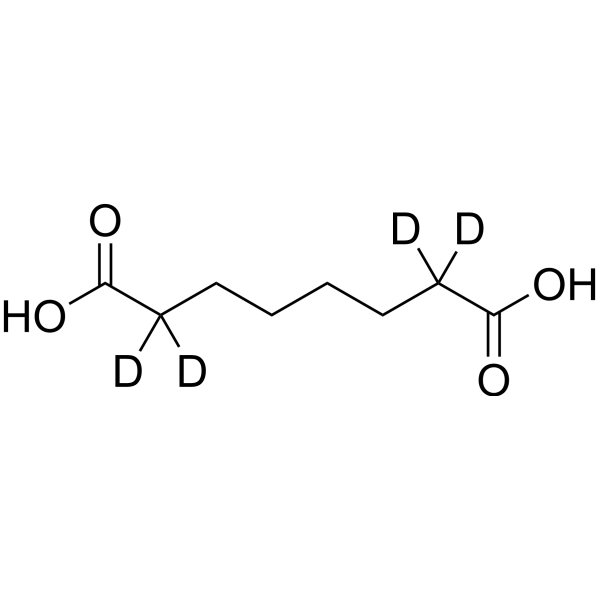
-
- HY-W015300S1
-
|
Octanedioic acid-d12
|
Endogenous Metabolite
|
Metabolic Disease
|
|
Suberic acid-d12 is the deuterium labeled Suberic acid[1]. Suberic acid (Octanedioic acid) is found to be associated with carnitine-acylcarnitine translocase deficiency, malonyl-Coa decarboxylase deficiency[2].
|
-
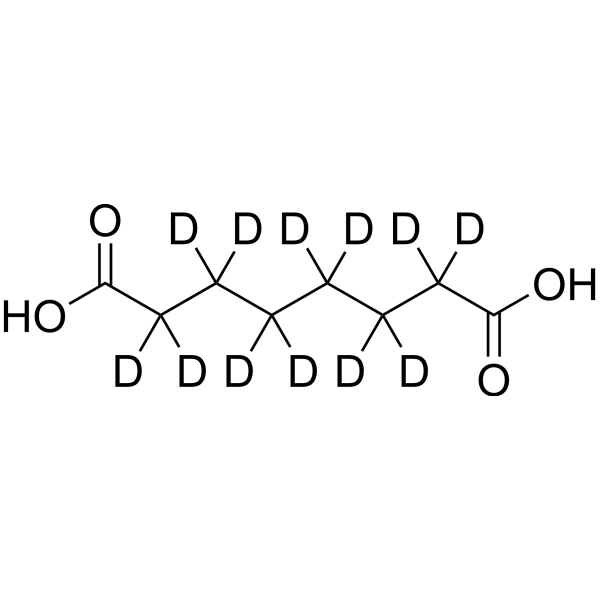
-
- HY-W017522S
-
|
|
Endogenous Metabolite
|
Metabolic Disease
|
|
Adipic acid-d10 is the deuterium labeled Adipic acid[1]. Adipic acid is found to be associated with HMG-CoA lyase deficiency, carnitine-acylcarnitine translocase deficiency, malonyl-Coa decarboxylase deficiency, and medium Chain acyl-CoA dehydrogenase deficiency, which are inborn errors of metabolism[2].
|
-
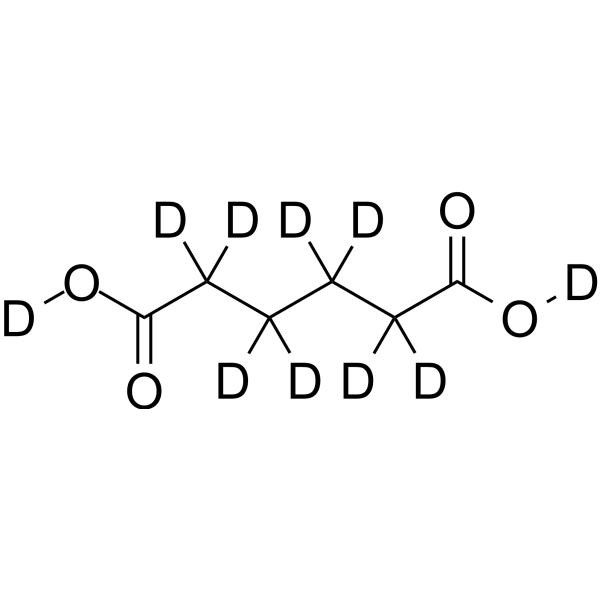
-
- HY-W017522S1
-
|
|
Endogenous Metabolite
|
Metabolic Disease
|
|
Adipic acid- 13C6 is the 13C labeled Adipic acid[1]. Adipic acid is found to be associated with HMG-CoA lyase deficiency, carnitine-acylcarnitine translocase deficiency, malonyl-Coa decarboxylase deficiency, and medium Chain acyl-CoA dehydrogenase deficiency, which are inborn errors of metabolism[2].
|
-
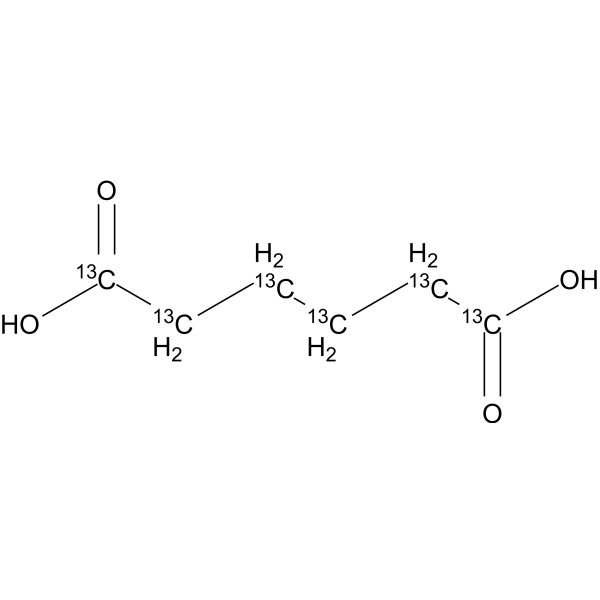
-
- HY-W017522S2
-
|
|
Endogenous Metabolite
|
Metabolic Disease
|
|
Adipic acid-d4 is the deuterium labeled Adipic acid[1]. Adipic acid is found to be associated with HMG-CoA lyase deficiency, carnitine-acylcarnitine translocase deficiency, malonyl-Coa decarboxylase deficiency, and medium Chain acyl-CoA dehydrogenase deficiency, which are inborn errors of metabolism[2].
|
-
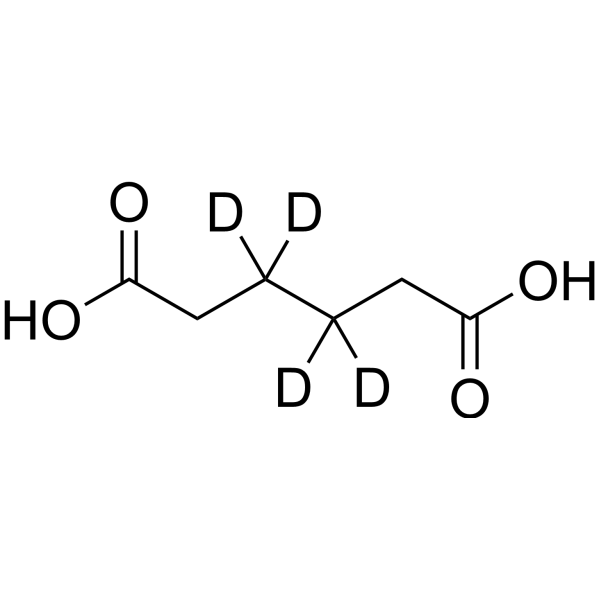
-
- HY-W017522S4
-
|
|
Endogenous Metabolite
|
Metabolic Disease
|
|
Adipic acid-d8 is the deuterium labeled Adipic acid[1]. Adipic acid is found to be associated with HMG-CoA lyase deficiency, carnitine-acylcarnitine translocase deficiency, malonyl-Coa decarboxylase deficiency, and medium Chain acyl-CoA dehydrogenase deficiency, which are inborn errors of metabolism[2].
|
-
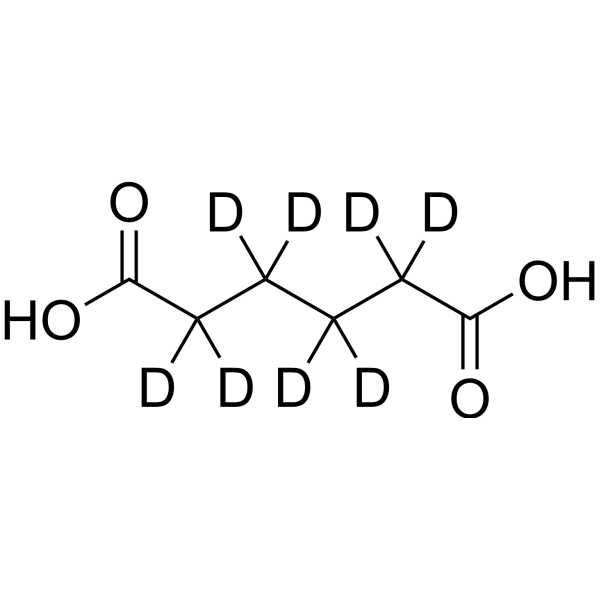
-
- HY-W017522S5
-
|
|
Endogenous Metabolite
|
Metabolic Disease
|
|
Adipic acid-d4-1 is the deuterium labeled Adipic acid[1]. Adipic acid is found to be associated with HMG-CoA lyase deficiency, carnitine-acylcarnitine translocase deficiency, malonyl-Coa decarboxylase deficiency, and medium Chain acyl-CoA dehydrogenase deficiency, which are inborn errors of metabolism[2].
|
-
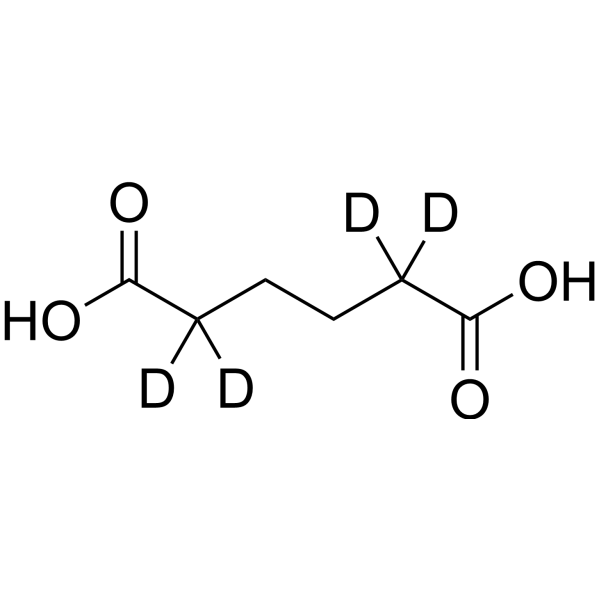
-
- HY-N0384R
-
|
Vanilacetic acid (Standard)
|
Drug Metabolite
Endogenous Metabolite
|
Metabolic Disease
|
|
Homovanillic acid (Standard) is the analytical standard of Homovanillic acid. This product is intended for research and analytical applications. Homovanillic acid is a dopamine metabolite found to be associated with aromatic L-amino acid decarboxylase deficiency, celiac disease, growth hormone deficiency, and sepiapterin reductase deficiency.
|
-

-
- HY-N0384S3
-
|
|
Isotope-Labeled Compounds
Endogenous Metabolite
|
Metabolic Disease
|
|
Homovanillic acid- 13C6, 18O is the 13C-labeled Homovanillic acid. Homovanillic acid is a dopamine metabolite found to be associated with aromatic L-amino acid decarboxylase deficiency, celiac disease, growth hormone deficiency, and sepiapterin reductase deficiency.
|
-
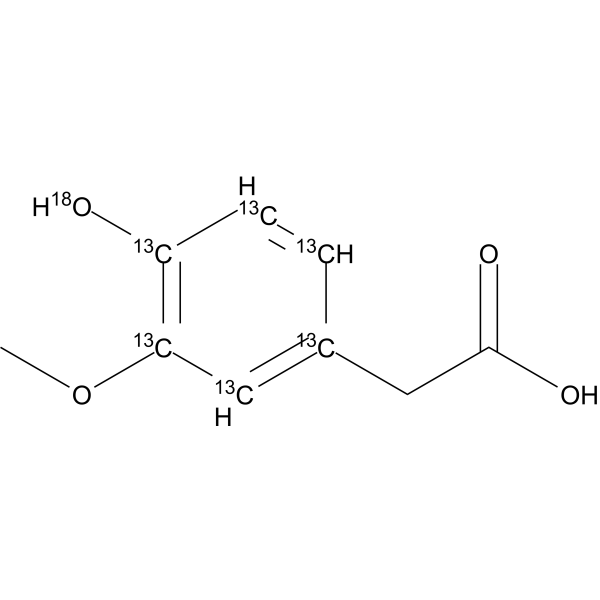
-
- HY-W014787S
-
|
|
Endogenous Metabolite
|
Metabolic Disease
|
|
Decanedioic acid-d4 is the deuterium labeled Decanedioic acid[1]. Decanedioic acid, a normal urinary acid, is found to be associated with carnitine-acylcarnitine translocase deficiency and medium chain acyl-CoA dehydrogenase deficiency[2].
|
-
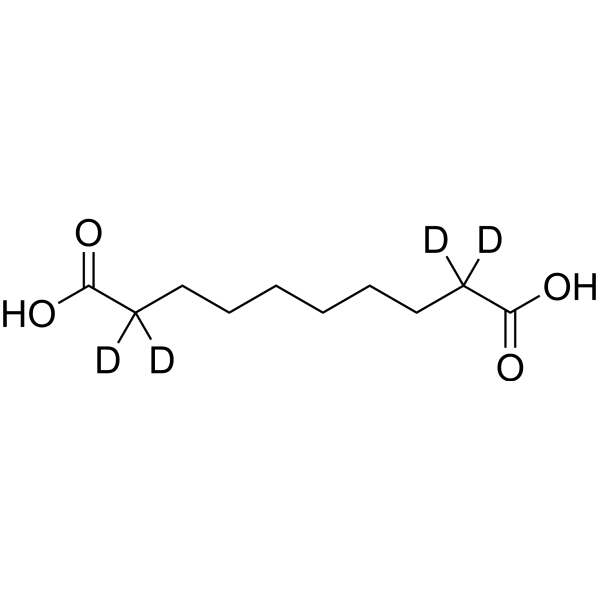
-
- HY-W014787S1
-
|
|
Endogenous Metabolite
|
Metabolic Disease
|
|
Decanedioic acid-d16 is the deuterium labeled Decanedioic acid[1]. Decanedioic acid, a normal urinary acid, is found to be associated with carnitine-acylcarnitine translocase deficiency and medium chain acyl-CoA dehydrogenase deficiency[2].
|
-
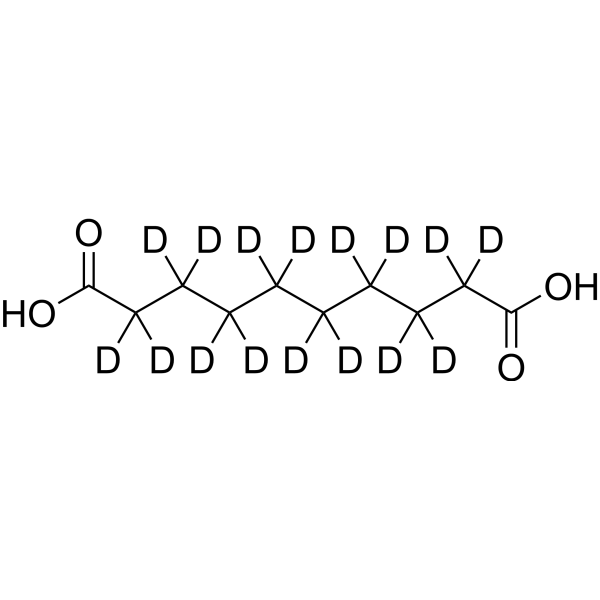
-
- HY-W014787
-
|
|
Endogenous Metabolite
|
Metabolic Disease
|
|
Decanedioic acid, a normal urinary acid, is found to be associated with carnitine-acylcarnitine translocase deficiency and medium chain acyl-CoA dehydrogenase deficiency.
|
-

-
- HY-D1632
-
|
|
Fluorescent Dye
|
Others
|
|
4-MU-α-GlcNS sodium is a fluorogenic substrate of heparin sulphamidase, is desulfurized into 4-MU-α-GlcNH2. 4-MU-α-GlcNH2 can liberate 4-methylumbelliferone (4-MU, fluorescent product) via α-glucosaminidase catalysis, with the emission wavelength maxima of 445-454 nm. 4-MU-α-GlcNS sodium can be used to heparin sulphamidase deficiencies associated with Mucopolisaccaridosis IIIA and other lysosomal disorders researches .
|
-

-
- HY-128144
-
|
|
Lipase
|
Metabolic Disease
|
|
Lalistat 2 is an inhibitor of many lipases especially Lysosomal acid lipase (LAL, IC50 = 152 nM), which is a key enzyme that degrades neutral lipids at an acidic pH in lysosomes. Lalistat 2 is commonly used to investigate the cell-specific functions of LAL and LAL deficiency in vitro, as well as specifically measure LAL activity in human blood samples or cells .
|
-
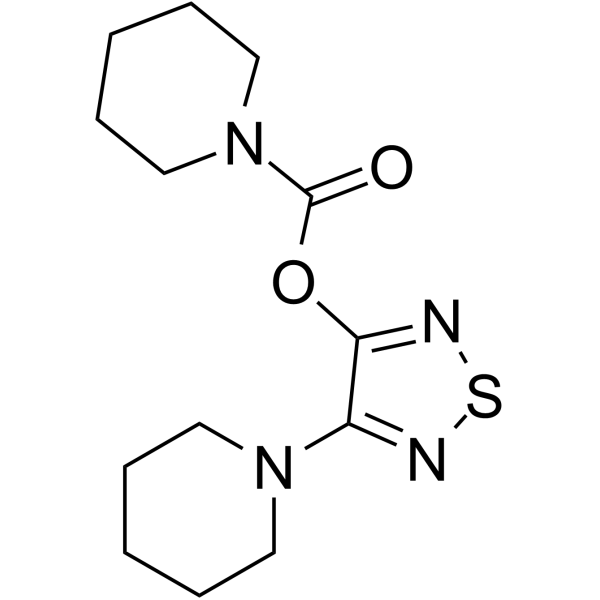
-
- HY-N0384S4
-
|
Vanilacetic acid-d3-1
|
Isotope-Labeled Compounds
Endogenous Metabolite
|
Metabolic Disease
|
|
Homovanillic acid-d3-1 (Vanilacetic acid-d3-1) is deuterated labeled Homovanillic acid (HY-N0384). Homovanillic acid is a dopamine metabolite associated with aromatic amino acid decarboxylase deficiency, celiac disease, growth hormone deficiency, and adiponectin reductase deficiency .
|
-
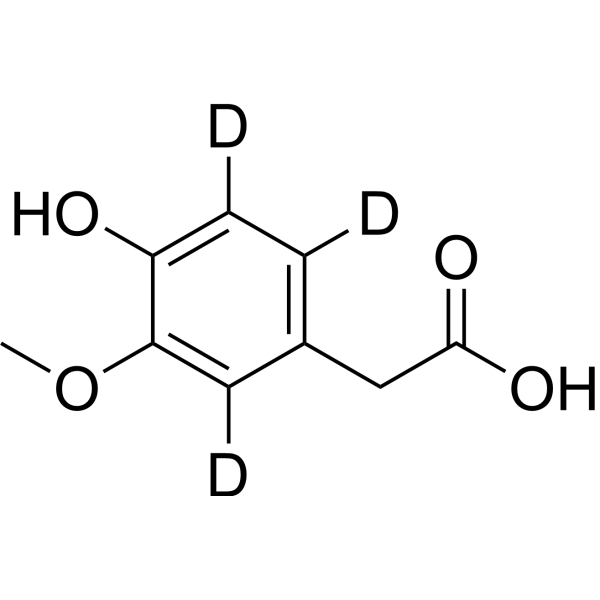
-
- HY-113166
-
|
|
Endogenous Metabolite
|
Metabolic Disease
|
|
Dodecanoylcarnitine is present in fatty acid oxidation disorders such as long-chain acyl CoA dehydrogenase deficiency, carnitine palmitoyltransferase I/II deficiency, and is also associated with celiac disease.
|
-
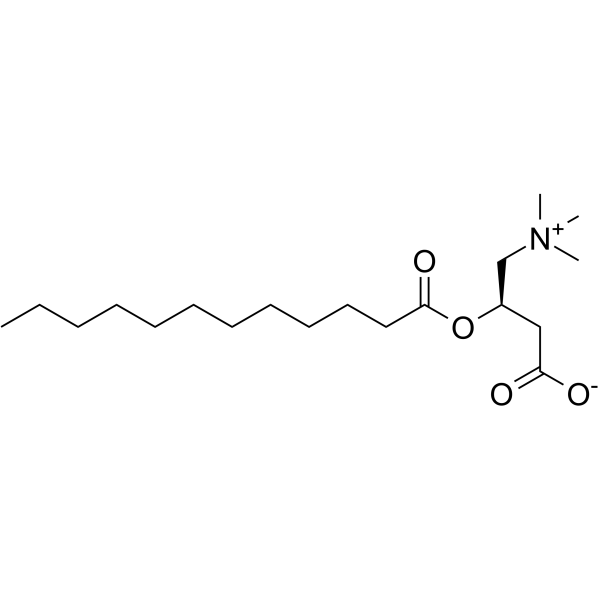
-
- HY-132604
-
|
ARO-AAT
|
Small Interfering RNA (siRNA)
|
Metabolic Disease
|
|
Fazirsiran (ARO-AAT) is a second-generation RNAi agent. Fazirsiran consistes of a cholesterol-conjugated RNAi trigger (chol-RNAi) to selectively degrade Alpha1-antitrypsin (AAT) mRNA by RNAi and a melittin-derived peptide conjugated to N-acetylgalactosamine (NAG) formulated as the excipient EX1 to promote endosomal escape of the chol-RNAi in hepatocytes . Fazirsiran can be used in the study of Alpha-1 Antitrypsin Deficiency (AATD) liver disease.
|
-

-
- HY-132604A
-
|
ARO-AAT sodium
|
Small Interfering RNA (siRNA)
|
Metabolic Disease
|
|
Fazirsiran sodium is a second-generation RNAi agent. Fazirsiran sodium consistes of a cholesterol-conjugated RNAi trigger (chol-RNAi) to selectively degrade Alpha1-antitrypsin (AAT) mRNA by RNAi and a melittin-derived peptide conjugated to N-acetylgalactosamine (NAG) formulated as the excipient EX1 to promote endosomal escape of the chol-RNAi in hepatocytes . Fazirsiran sodium can be used in the study of Alpha-1 Antitrypsin Deficiency (AATD) liver disease.
|
-
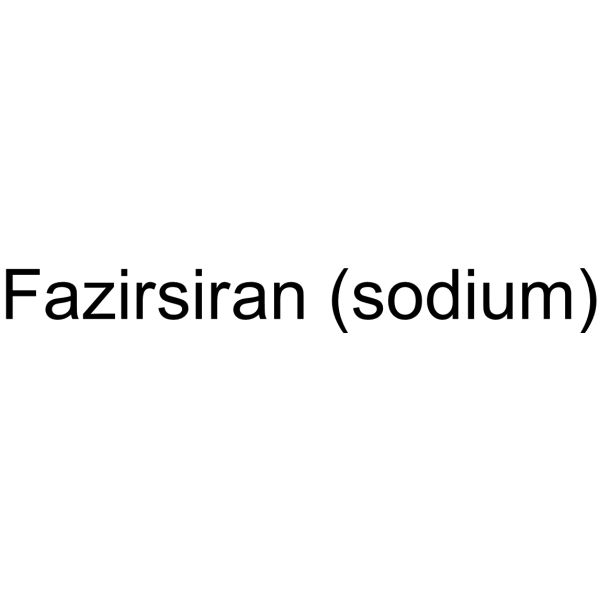
-
- HY-113375
-
|
D-Ribose
|
Endogenous Metabolite
|
Cardiovascular Disease
|
|
D-Ribofuranose (D-Ribose) is an endogenous metabolite present in Cerebrospinal_Fluid that can be used for the research of Ribose 5 Phosphate Isomerase Deficiency and Medium Chain Acyl Co A Dehydrogenase Deficiency .
|
-

-
- HY-N5134
-
|
5'-GMP; 5'-guanosine monophosphate
|
Endogenous Metabolite
|
Metabolic Disease
|
|
5'-Guanylic acid (5'-GMP) is involved in several metabolic disorders, including the AICA-ribosiduria pathway, adenosine deaminase deficiency, adenine phosphoribosyltransferase deficiency (aprt), and the 2-hydroxyglutric aciduria pathway.
|
-
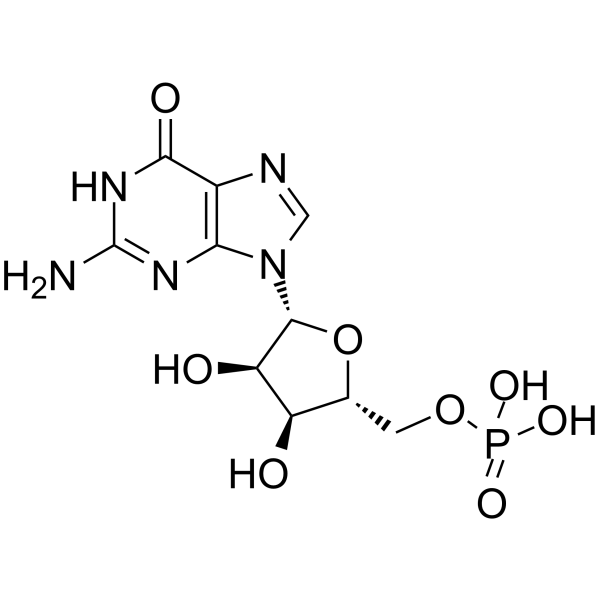
-
- HY-112540
-
|
|
Endogenous Metabolite
|
Neurological Disease
Metabolic Disease
|
|
Acetoacetic acid is an endogenous metabolite present in Cerebrospinal_Fluid and Blood that can be used for the research of Meningitis, Pregnancy, 3 Hydroxy 3 Methylglutaryl CoA Lyase Deficiency, Preeclampsia/Eclampsia, Diabetes Mellitus Type 2, Glucose Transporter Type 1 Deficiency Syndrome and Succinyl CoA:3 Oxoacid CoA Transferase Deficiency .
|
-

-
- HY-108398AS
-
|
5,8,11-Eicosatrienoic acid-d6
|
Isotope-Labeled Compounds
|
Metabolic Disease
Cancer
|
|
Mead acid-d6 is the deuterium labeled Mead acid. Mead acid (5,8,11-Eicosatrienoic acid), an unsaturated (Omega-9) fatty acid, is an indicator of essential fatty acid deficiency[1].
|
-
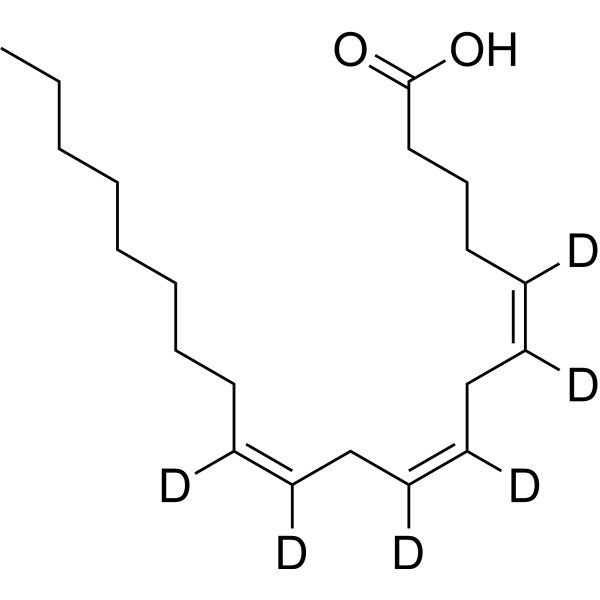
-
- HY-113468
-
|
3-Methoxytyrosine
|
Endogenous Metabolite
|
Neurological Disease
|
|
3-O-Methyl-DL-DOPA is an endogenous metabolite present in Cerebrospinal_Fluid that can be used for the research of Epilepsy, Purine Nucleoside Phosphorylase Deficiency and Aromatic L Amino Acid Decarboxylase Deficiency .
|
-

- HY-129398
-
-
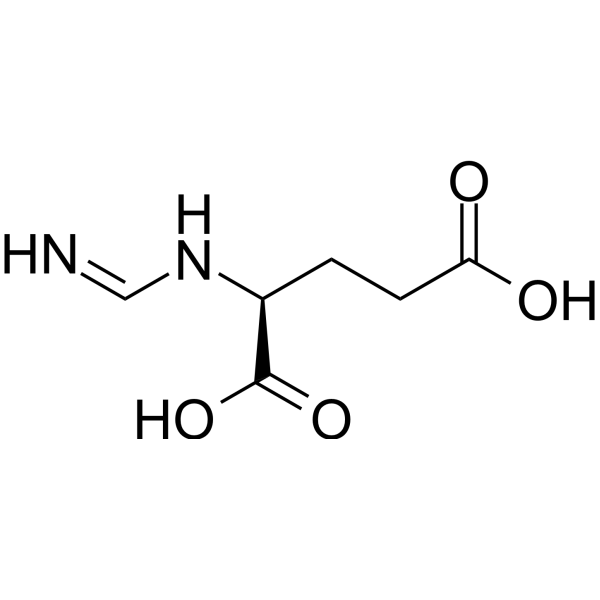
- HY-103395
-
|
Methylpropanedioic acid; Methylmalonate
|
Endogenous Metabolite
|
Cancer
|
|
Methylmalonic acid (Methylmalonate) is an indicator of Vitamin B-12 deficiency in cancer.
|
-

- HY-N11200
-
|
|
Endogenous Metabolite
|
Metabolic Disease
|
|
3-Hydroxyisovalerylcarnitine is a carnitine derivative. 3-Hydroxyisovaleryl carnitine in plasma may serve as a novel biomarker of biotin deficiency in humans, with its concentration increasing with biotin deficiency. Biotin deficiency reduces the activity of biotin-dependent 3-methylcrotonyl-CoA carboxylase, hinders the conversion of 3-methylcrotonyl-CoA into 3-methylglutaconyl-CoA, and impairs the leucine catabolism pathway; resulting in plasma 3-Hydroxyisovalerylcarnitine concentrations rise .
|
-

- HY-128790S1
-
|
|
Isotope-Labeled Compounds
Endogenous Metabolite
|
Metabolic Disease
|
|
4-Methoxyestrone- 13C6 is a 13C-labeled 5'-Guanylic acid. 5'-Guanylic acid (5'-GMP) is involved in several metabolic disorders, including the AICA-ribosiduria pathway, adenosine deaminase deficiency, adenine phosphoribosyltransferase deficiency (aprt), and
|
-
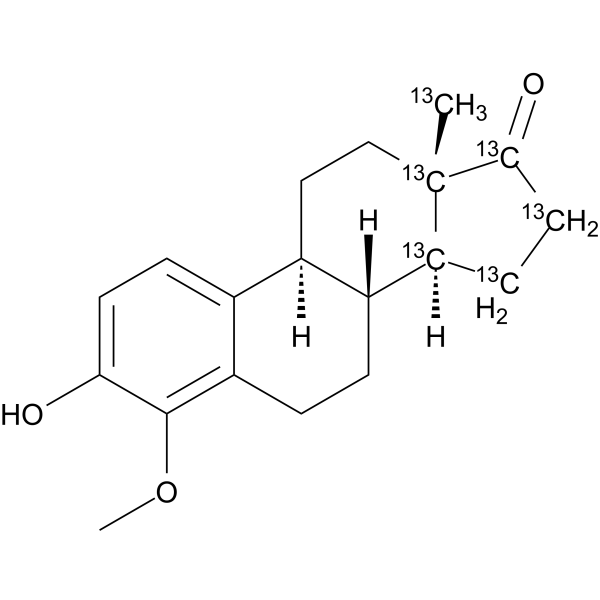
- HY-34740
-
-
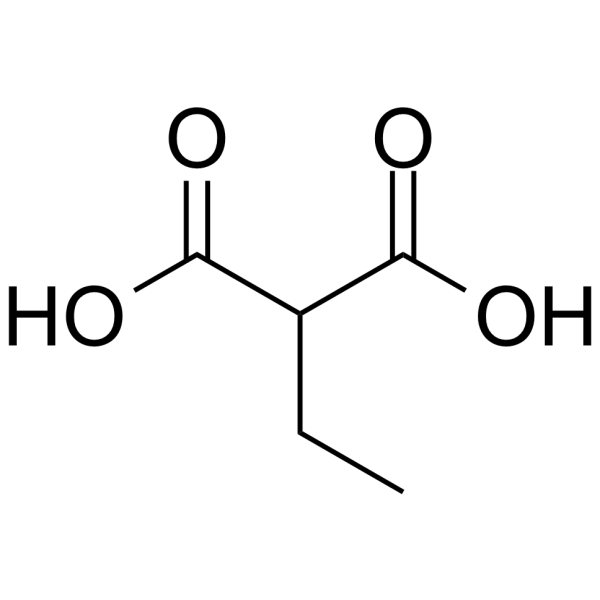
- HY-B0257A
-
|
|
Progesterone Receptor
|
Endocrinology
|
|
Dydrogesterone is a potent, orally active progestogen indicated in a wide variety of gynaecological conditions related to progesterone deficiency.
|
-
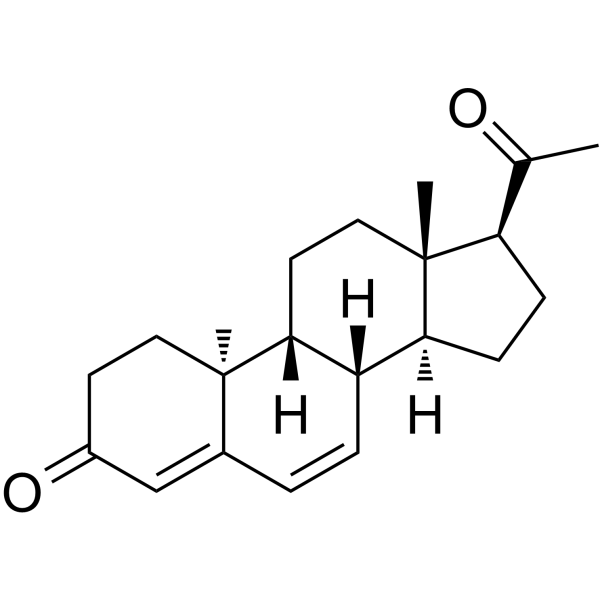
- HY-113408
-
-
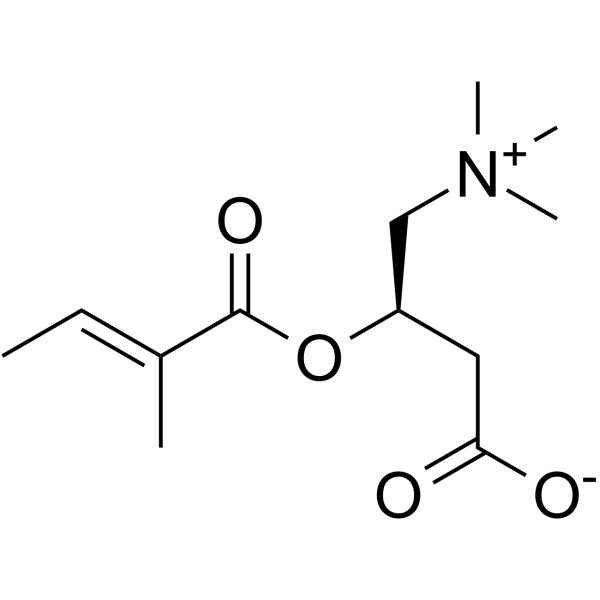
- HY-107928
-
-

- HY-Y0588
-
|
L-Cbz-Proline
|
|
|
|
Carbobenzoxyproline (L-Cbz-Proline) is an inhibitor of prolidase. Carbobenzoxyproline can be used for prolidase deficiency (PD) research .
|
-
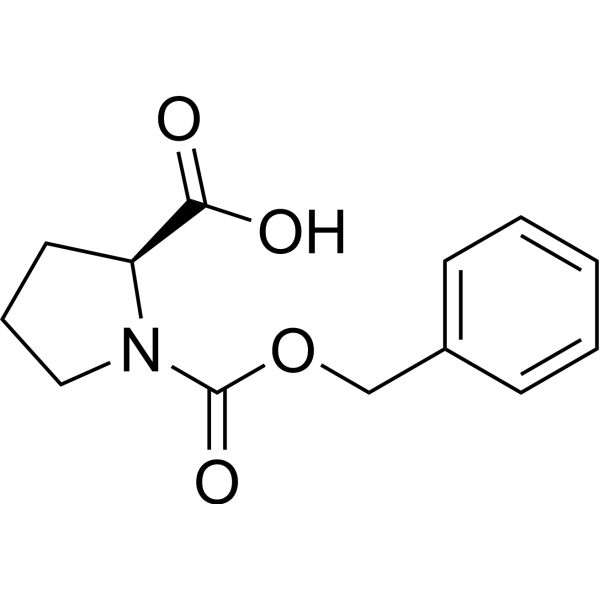
- HY-W012382
-
|
|
Endogenous Metabolite
|
Metabolic Disease
|
|
N-Acetyl-L-tyrosine originates from tyrosine through an AA acetylase, is associated with aromatic L-amino acid decarboxylase deficiency and tyrosinemia I.
|
-

- HY-W008638
-
-
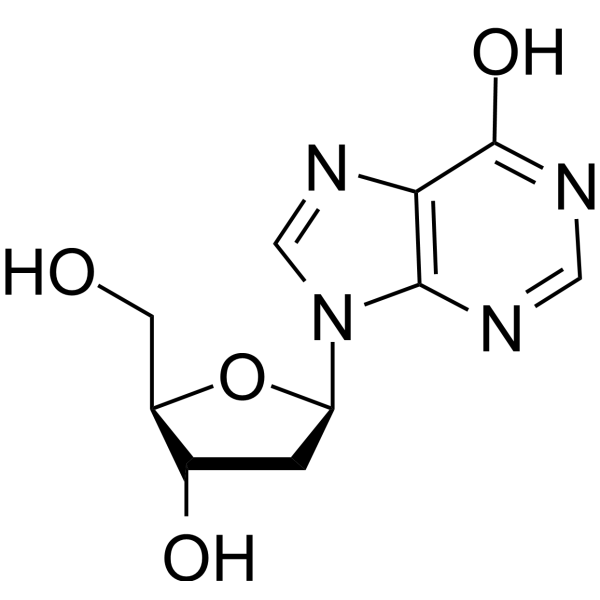
- HY-W145584
-
-
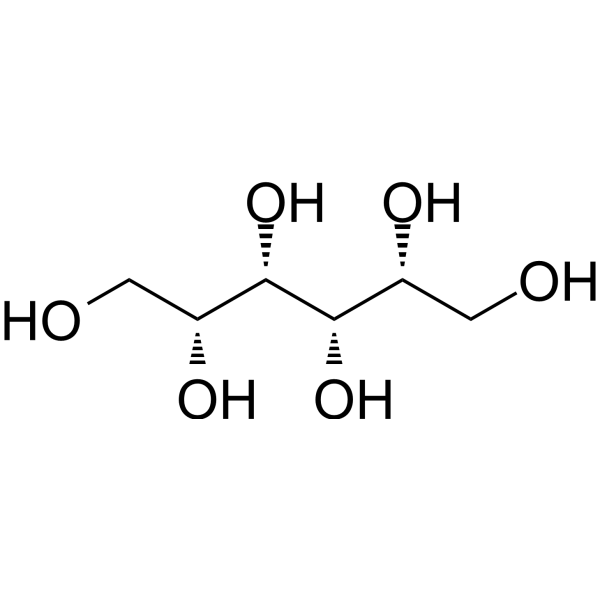
- HY-109525
-
|
|
Others
|
Metabolic Disease
|
|
Sacrosidase is a yeast-derived enzyme that facilitates sucrose digestion. Sacrosidase has the potential for congenital sucrase-isomaltase (SI) deficiency research .
|
-

- HY-113284
-
|
N6-Succinyl adenosine
|
Endogenous Metabolite
|
Metabolic Disease
|
|
Succinyladenosine, the metabolic product of dephosphorylation of intracellular adenylosuccinic acid (S-AMP) by cytosolic 5-nucleotidase, is a biochemical marker of adenylosuccinase (ASL) deficiency .
|
-
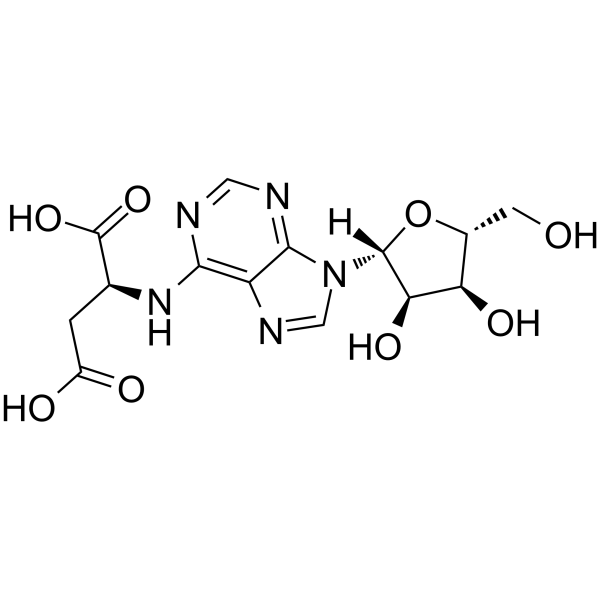
- HY-108398A
-
|
5,8,11-Eicosatrienoic acid
|
Others
|
Metabolic Disease
Cancer
|
|
Mead acid (5,8,11-Eicosatrienoic acid), an unsaturated (Omega-9) fatty acid, is an indicator of essential fatty acid deficiency .
|
-
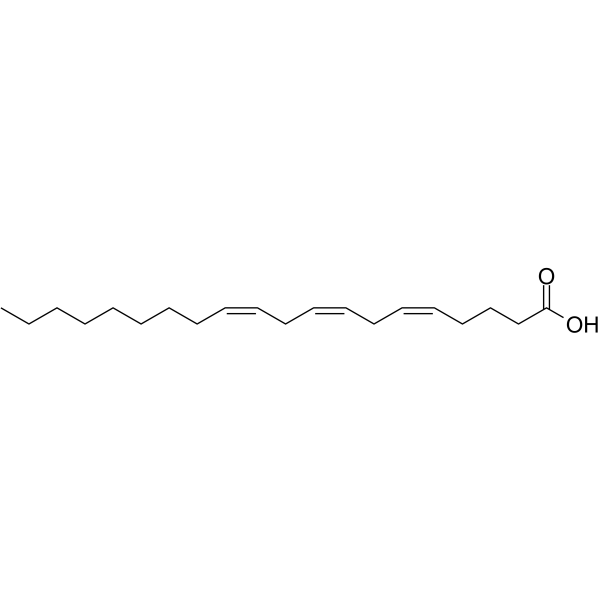
- HY-113024
-
|
|
Endogenous Metabolite
|
Metabolic Disease
|
|
Pristanic acid is an endogenous metabolite present in Blood that can be used for the research of Alpha Methylacyl CoA Racemase Deficiency and Zellweger Syndrome .
|
-
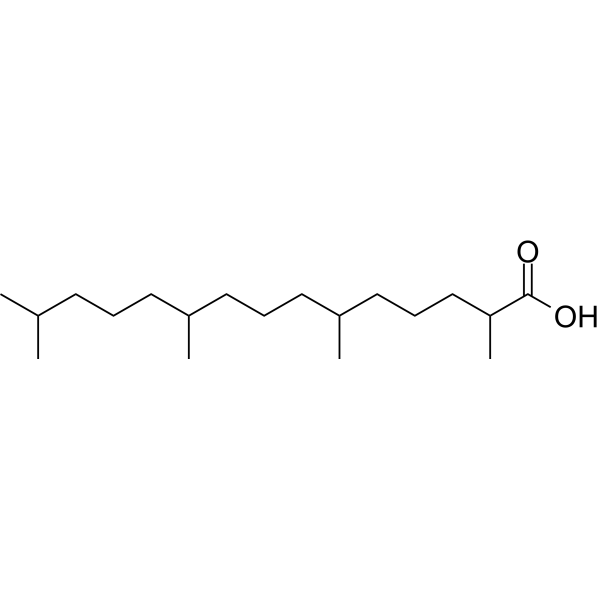
- HY-113317
-
-
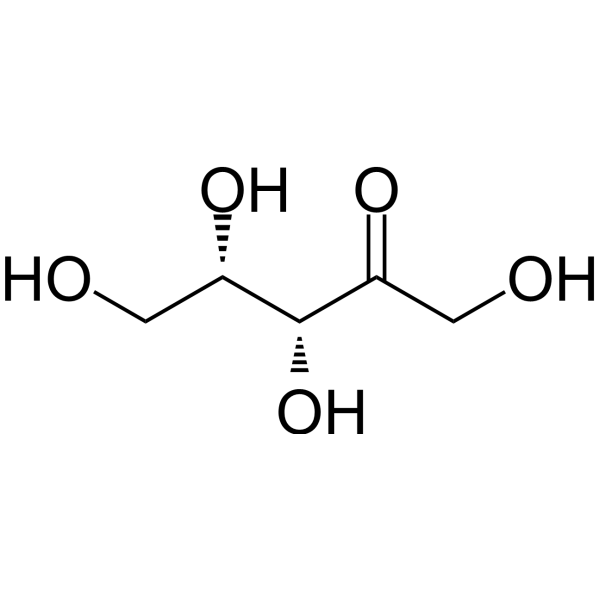
- HY-113451
-
|
|
Endogenous Metabolite
|
Metabolic Disease
|
|
3-Hydroxysebacic acid is an endogenous metabolite present in Urine that can be used for the research of Medium Chain Acyl Co A Dehydrogenase Deficiency .
|
-

- HY-113305
-
-
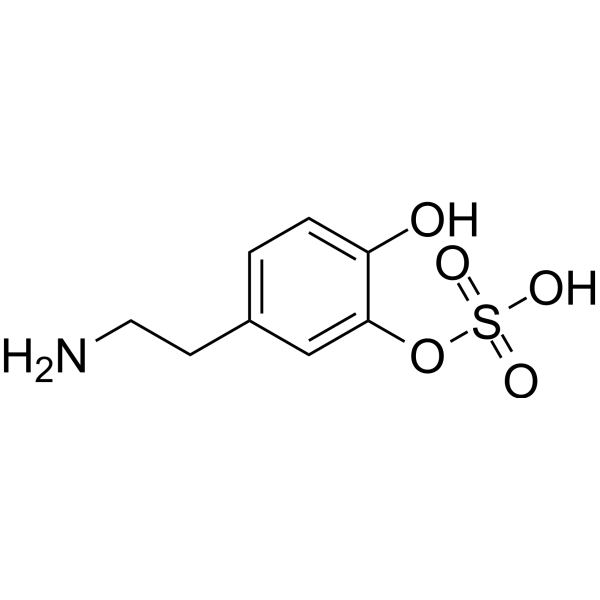
- HY-W010589
-
|
|
Endogenous Metabolite
|
Metabolic Disease
|
|
H-Abu-OH, one of the three isomers of aminobutyric acid, is elevated in the plasma of children with with Reye's syndrome, tyrosinemia, homocystinuria, nonketotic hyperglycinemia, and ornithine transcarbamylase deficiency.
|
-
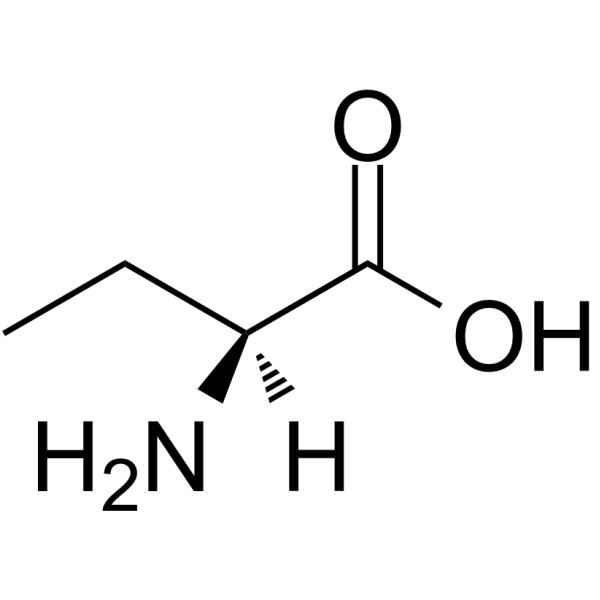
- HY-113304
-
|
|
Endogenous Metabolite
|
Metabolic Disease
|
|
(S)-3,4-Dihydroxybutyric acid is a normal human urinary metabolite that is excreted in increased concentration in patients with succinic semialdehyde dehydrogenase (SSADH) deficiency.
|
-
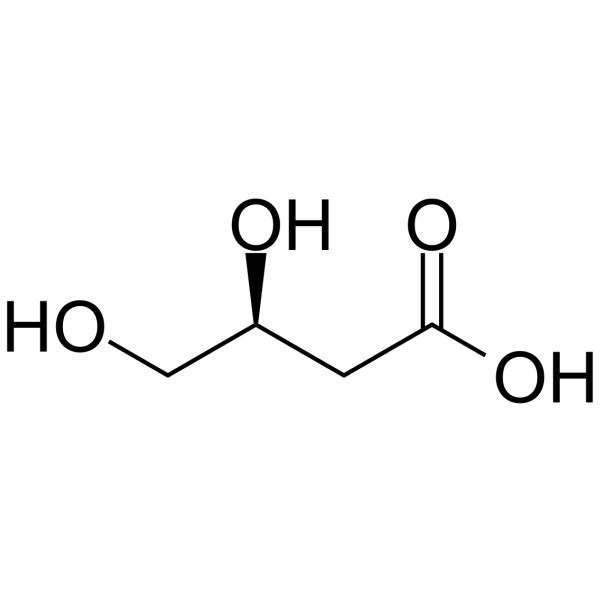
- HY-W015883S
-
|
|
Endogenous Metabolite
|
Metabolic Disease
Cancer
|
|
Fumaric acid- 13C4 is the 13C-labeled Fumaric acid. Fumaric acid, associated with fumarase deficiency, is identified as an oncometabolite or an endogenous, cancer causing metabolite.
|
-
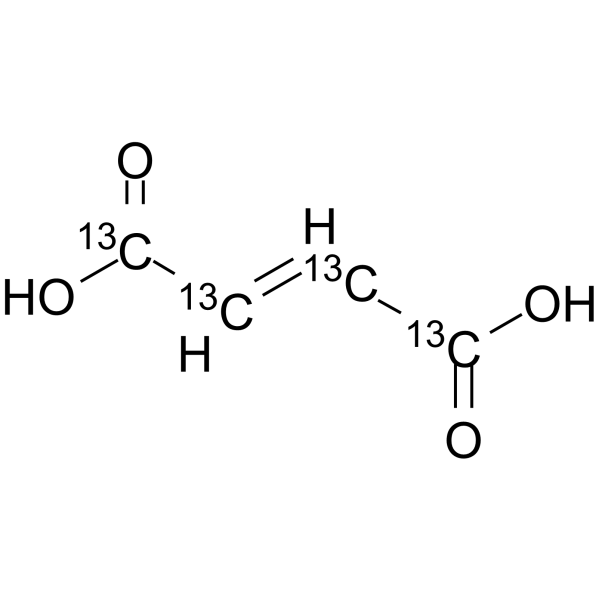
- HY-113423
-
|
Tetrahydrodeoxycortisol
|
Endogenous Metabolite
|
Others
|
|
Tetrahydro-11-deoxycortisol (Tetrahydrodeoxycortisol) is an endogenous metabolite present in Urine that can be used for the research of 11 Beta Hydroxylase Deficiency .
|
-

- HY-103395R
-
|
Methylpropanedioic acid (Standard); Methylmalonate (Standard)
|
Endogenous Metabolite
|
Cancer
|
|
Methylmalonic acid (Standard) is the analytical standard of Methylmalonic acid. This product is intended for research and analytical applications. Methylmalonic acid (Methylmalonate) is an indicator of Vitamin B-12 deficiency in cancer.
|
-
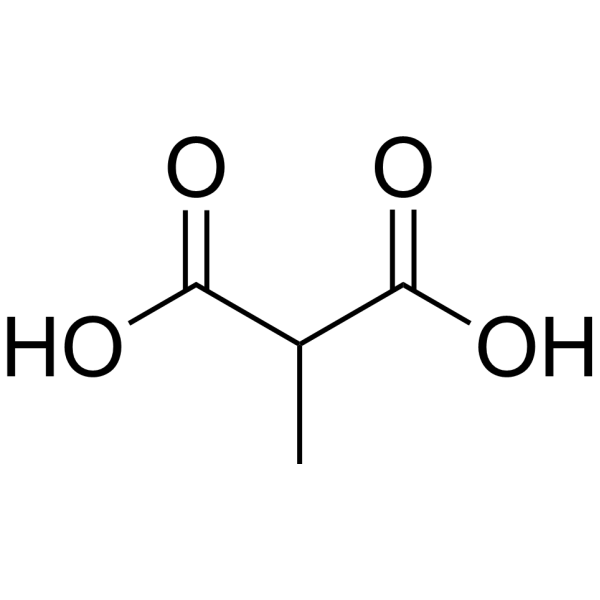
- HY-34740S
-
-

- HY-B0257AS
-
|
|
Progesterone Receptor
|
Endocrinology
|
|
Dydrogesterone-d6 is the deuterium labeled Dydrogesterone. Dydrogesterone is a potent, orally active progestogen indicated in a wide variety of gynaecological conditions related to progesterone deficiency.
|
-
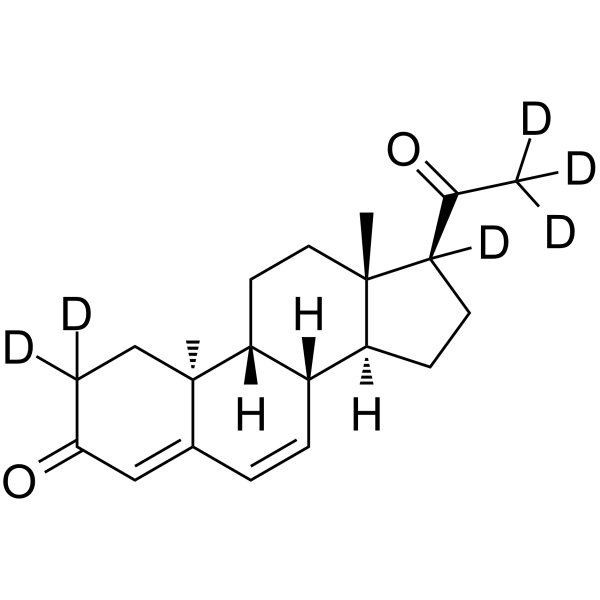
- HY-103395S
-
|
Methylpropanedioic acid-d3; Methylmalonate-d3
|
Endogenous Metabolite
|
Cancer
|
|
Methylmalonic acid-d3 is the deuterium labeled Methylmalonic acid. Methylmalonic acid (Methylmalonate) is an indicator of Vitamin B-12 deficiency in cancer[1][2].
|
-

- HY-34740S1
-
-

- HY-B1651
-
|
Ferrous fumarate
|
Others
|
Metabolic Disease
Cancer
|
|
Iron(II) fumarate (Ferrous fumarate) is the iron(II) salt of fumaric acid. Iron(II) fumarate is an orally active dietary supplement and has the potential for iron deficiency anemia treatment .
|
-
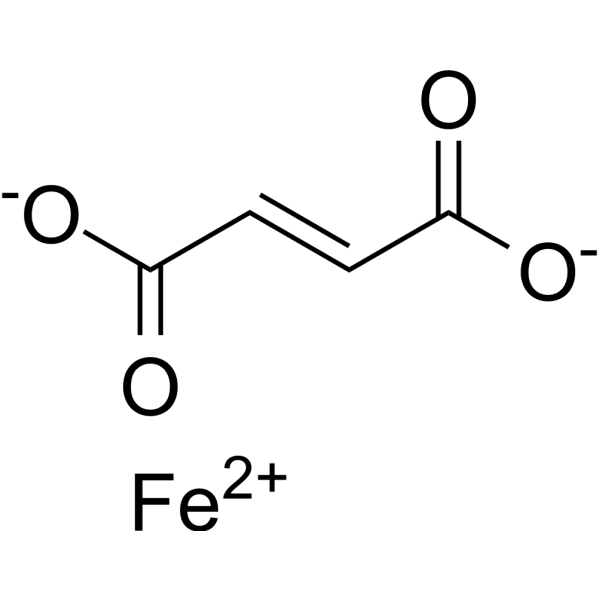
- HY-113304A
-
|
|
Endogenous Metabolite
|
Metabolic Disease
|
|
(S)-3,4-Dihydroxybutyric acid (lithium hydrate) is a normal human urinary metabolite that is excreted in increased concentration in patients with succinic semialdehyde dehydrogenase (SSADH) deficiency .
|
-
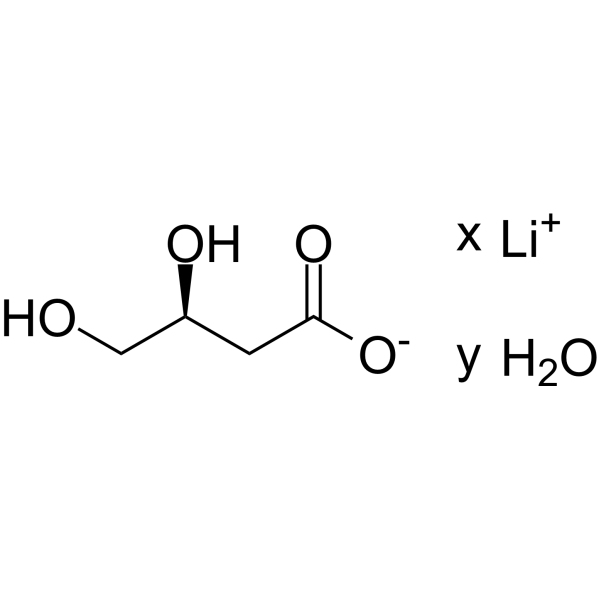
- HY-113347
-
|
|
Endogenous Metabolite
|
Others
|
|
cis-5-Tetradecenoic acid is an endogenous metabolite present in Blood that can be used for the research of Long Chain 3 Hydroxyacyl CoA Dehydrogenase Deficiency .
|
-
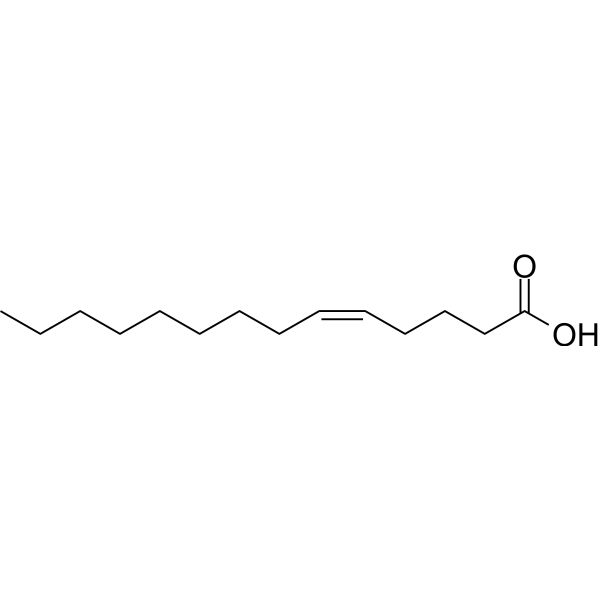
- HY-155093
-
|
|
Others
|
Neurological Disease
|
|
GLUT1-IN-3 (Compd 4b), an investigational compound associated with type 1 glucose transporter deficiency syndrome, potently suppresses seizures .
|
-
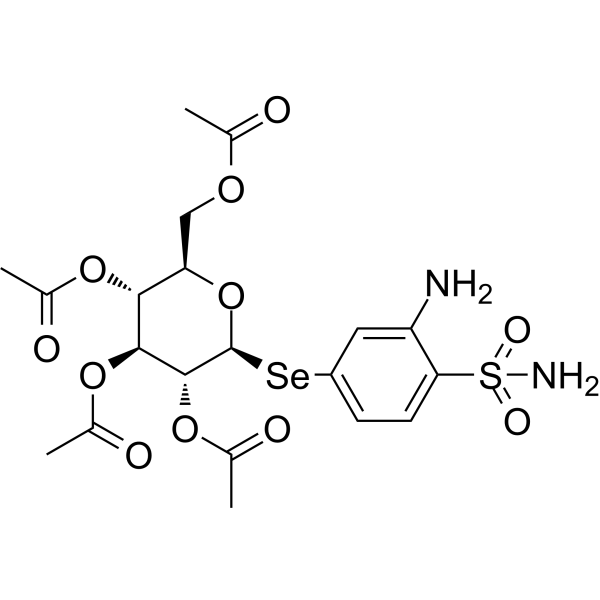
- HY-E70239
-
|
|
Others
|
Others
|
|
2-Methylbutyryl-CoA is an intermediate of isoleucine metabolism. 2-Methylbutyryl-CoA dehydrogenase deficiency is a genetic disorder caused by mutations in the HADH2 gene .
|
-
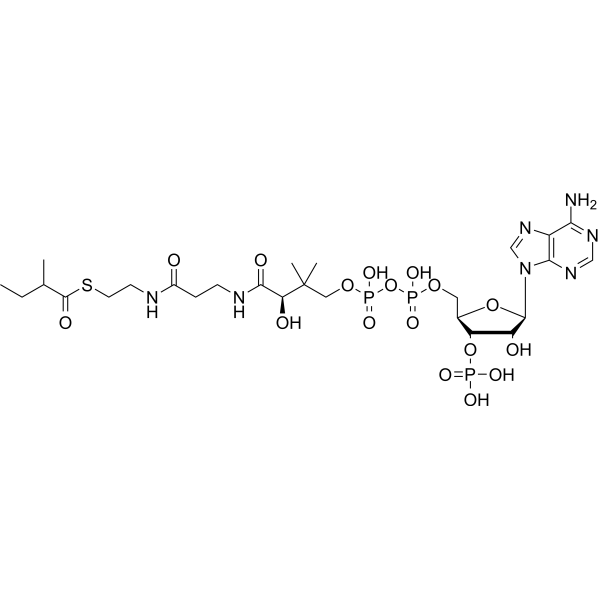
- HY-N5134S1
-
|
5'-GMP-13C10 dilithium; 5'-guanosine monophosphate-13C10 dilithium
|
Isotope-Labeled Compounds
Endogenous Metabolite
|
Metabolic Disease
|
|
5'-Guanylic acid- 13C10 (5'-GMP- 13C10 dilithium; 5'-guanosine monophosphate- 13C10) dilithium is 13C-labeled 5'-Guanylic acid (HY-N5134). 5'-Guanylic acid (5'-GMP) is involved in several metabolic disorders, including the AICA-ribosiduria pathway, adenosine deaminase deficiency, adenine phosphoribosyltransferase deficiency (aprt), and the 2-hydroxyglutric aciduria pathway.
|
-

- HY-N5134S2
-
|
5'-GMP-15N5 dilithium; 5'-guanosine monophosphate-15N5 dilithium
|
Isotope-Labeled Compounds
Endogenous Metabolite
|
Metabolic Disease
|
|
5'-Guanylic acid- 15N5 (5'-GMP- 15N5 dilithium; 5'-guanosine monophosphate- 15N5) dilithium is 15N labeled 5'-Guanylic acid (HY-N5134). 5'-Guanylic acid (5'-GMP) is involved in several metabolic disorders, including the AICA-ribosiduria pathway, adenosine deaminase deficiency, adenine phosphoribosyltransferase deficiency (aprt), and the 2-hydroxyglutric aciduria pathway.
|
-

- HY-N5134S3
-
|
5'-GMP-d12 dilithium; 5'-guanosine monophosphate-d12 dilithium
|
Isotope-Labeled Compounds
Endogenous Metabolite
|
Metabolic Disease
|
|
5'-Guanylic acid-d12 (5'-GMP-d12 dilithium; 5'-guanosine monophosphate-d12) dilithium is deuterium labeled 5'-Guanylic acid (HY-N5134). 5'-Guanylic acid (5'-GMP) is involved in several metabolic disorders, including the AICA-ribosiduria pathway, adenosine deaminase deficiency, adenine phosphoribosyltransferase deficiency (aprt), and the 2-hydroxyglutric aciduria pathway.
|
-
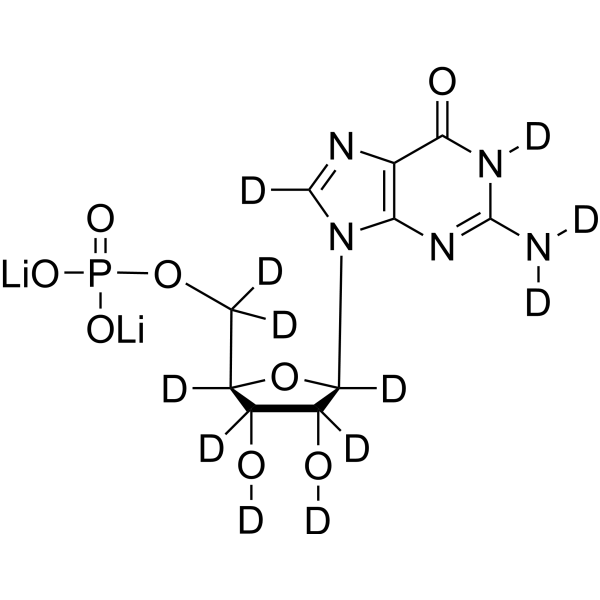
- HY-W040141
-
|
|
Endogenous Metabolite
|
Metabolic Disease
|
|
L-Arabinitol is a potential biomarker for the comsuption of the food products such as sweet potato, deerberry, moth bean, and is also associated with Alzheimer's disease and ribose-5-phosphate isomerase deficiency.
|
-
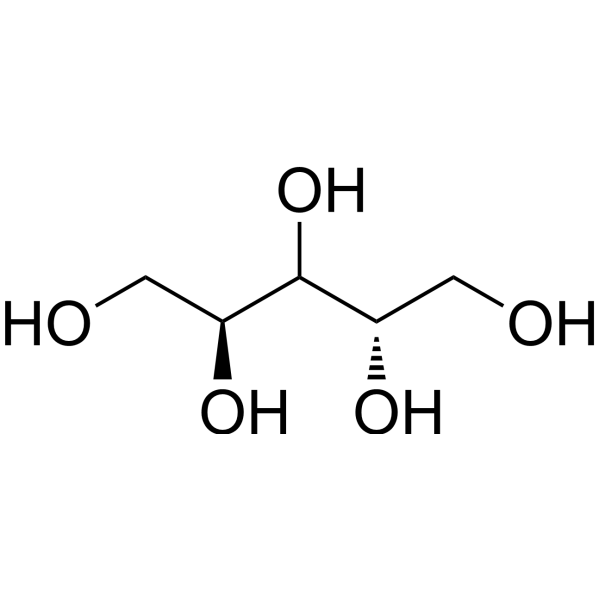
- HY-N3025
-
|
|
Others
|
Metabolic Disease
|
|
Zinc sulfate heptahydrate is a hydrate that is the heptahydrate form of zinc sulfate. Zinc sulfate heptahydrate is a dietary supplement used for zinc deficiency and to prevent the condition in those at high risk .
|
-

- HY-B2068
-
|
Iron saccharate
|
|
|
|
Iron sucrose (Iron saccharate) is a intravenous iron preparation and a pro-oxidant agent. Iron sucrose has the potential for iron deficiency anemia treatment .
|
-
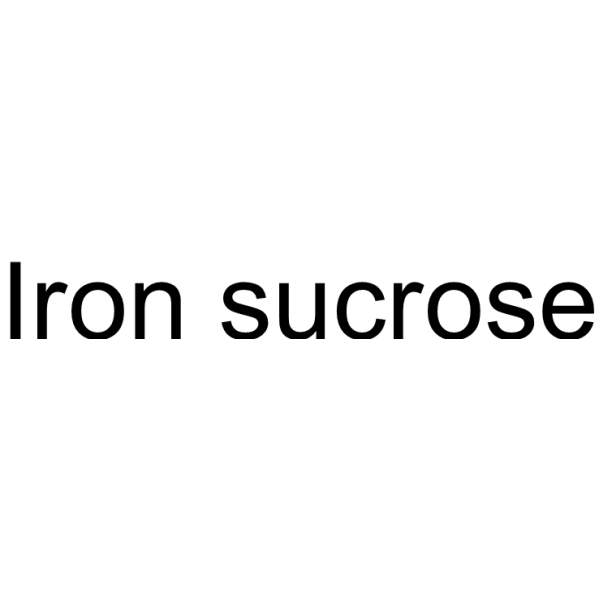
- HY-103395S1
-
|
|
Endogenous Metabolite
|
Cancer
|
|
Methylmalonic acid- 13C4 is the 13C labeled Methylmalonic acid[1]. Methylmalonic acid (Methylmalonate) is an indicator of Vitamin B-12 deficiency in cancer[2].
|
-
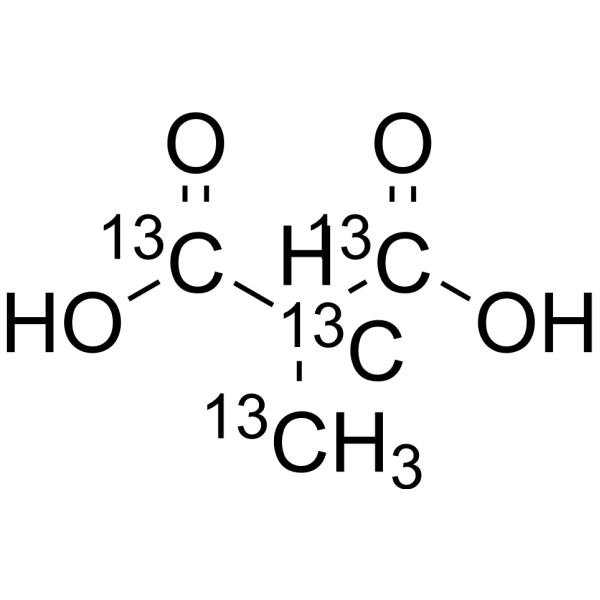
- HY-113048
-
|
|
Endogenous Metabolite
|
Metabolic Disease
|
|
Erythronic acid is an endogenous metabolite of carbohydrates that can be used in the study of metabolism-related diseases. It plays a key role in the onset and improvement of hyperuricemia and is related to mitochondrial dysfunction in transaldolase deficiency .
|
-
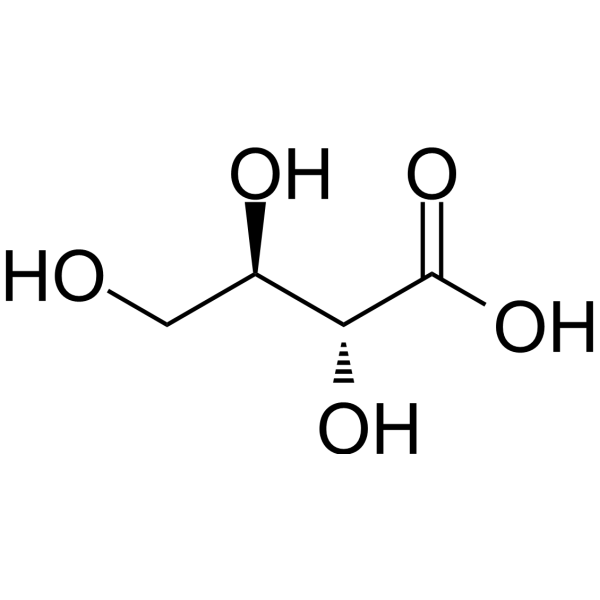
- HY-113048A
-
|
|
Endogenous Metabolite
|
Metabolic Disease
|
|
Erythronic acid potassium is an endogenous metabolite of carbohydrates that can be used in the study of metabolism-related diseases. It plays a key role in the onset and improvement of hyperuricemia and is related to mitochondrial dysfunction in transaldolase deficiency .
|
-
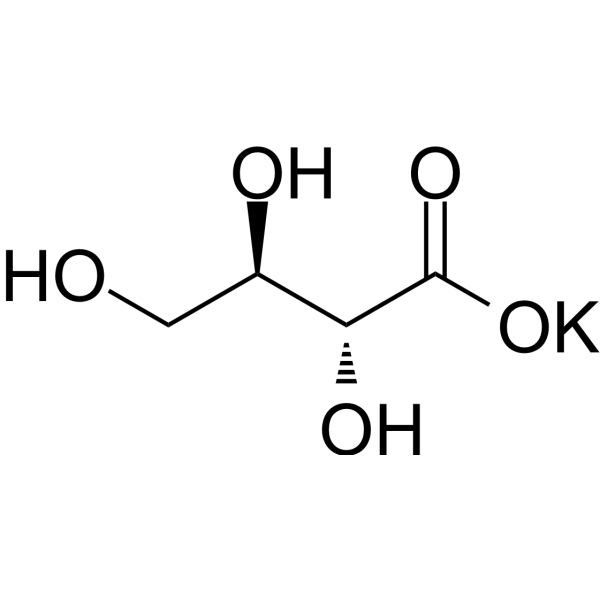
- HY-B2082
-
-
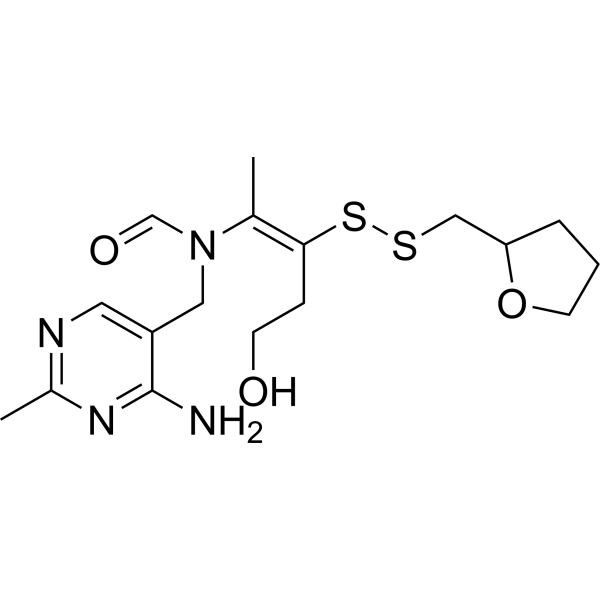
- HY-113335
-
|
Coprocholic acid
|
Endogenous Metabolite
|
Inflammation/Immunology
|
|
Trihydroxycholestanoic acid is an endogenous metabolite present in Blood that can be used for the research of Zellweger Syndrome, Refsum Disease, D Bifunctional Protein Deficiency and Infantile Refsum Disease .
|
-
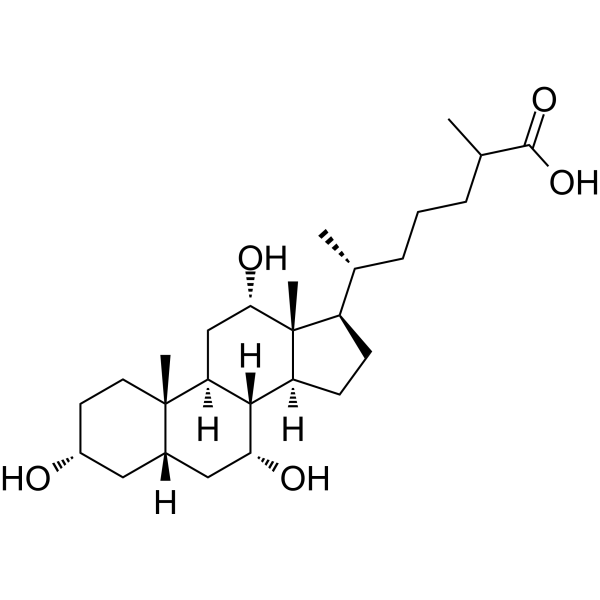
- HY-W015883S3
-
|
|
Endogenous Metabolite
|
|
|
Fumaric acid-d2 is the deuterium labeled Fumaric acid[1]. Fumaric acid, associated with fumarase deficiency, is identified as an oncometabolite or an endogenous, cancer causing metabolite[2].
|
-
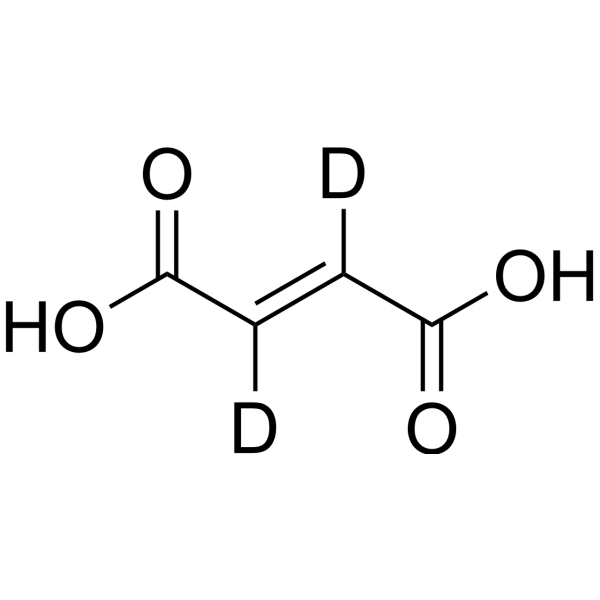
- HY-W015883S4
-
|
|
Endogenous Metabolite
|
|
|
Fumaric acid-d4 is the deuterium labeled Fumaric acid[1]. Fumaric acid, associated with fumarase deficiency, is identified as an oncometabolite or an endogenous, cancer causing metabolite[2].
|
-
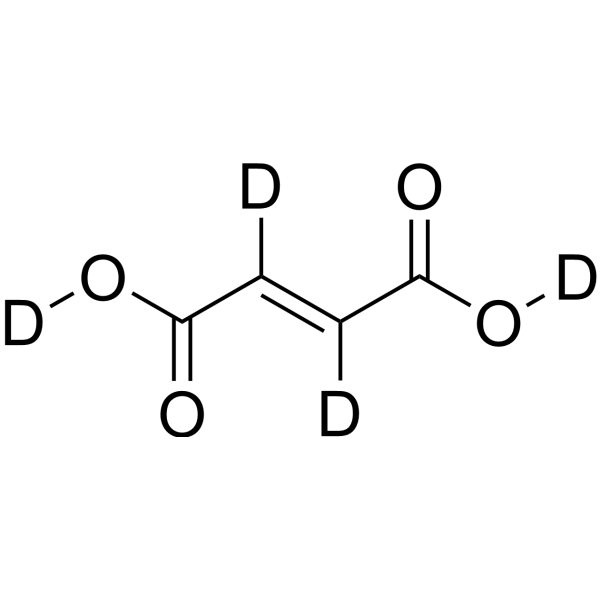
- HY-113406
-
|
|
Others
|
Inflammation/Immunology
|
|
Hexanoylcarnitine exists in human urine and plasma. Hexanoylcarnitine can be used as a plasma detection indicator in patients with methylmalonic aciduria, propionic acidemia, and medium-chain acyl-CoA dehydrogenase deficiency .
|
-
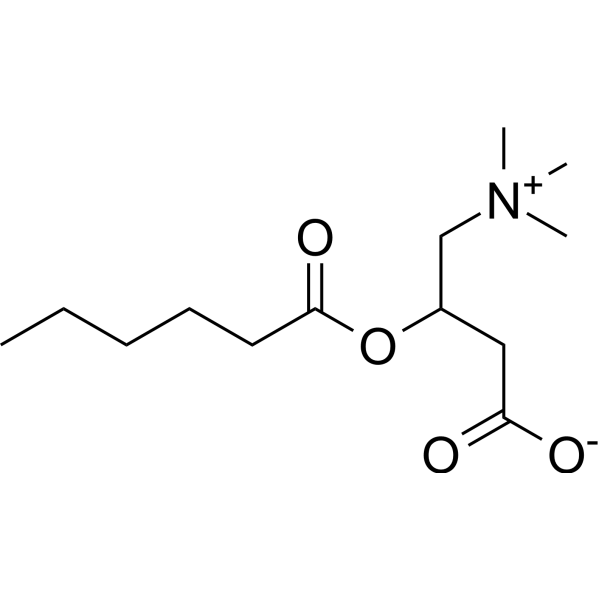
- HY-B0257AR
-
|
|
Progesterone Receptor
|
Endocrinology
|
|
Dydrogesterone (Standard) is the analytical standard of Dydrogesterone. This product is intended for research and analytical applications. Dydrogesterone is a potent, orally active progestogen indicated in a wide variety of gynaecological conditions related to progesterone deficiency.
|
-
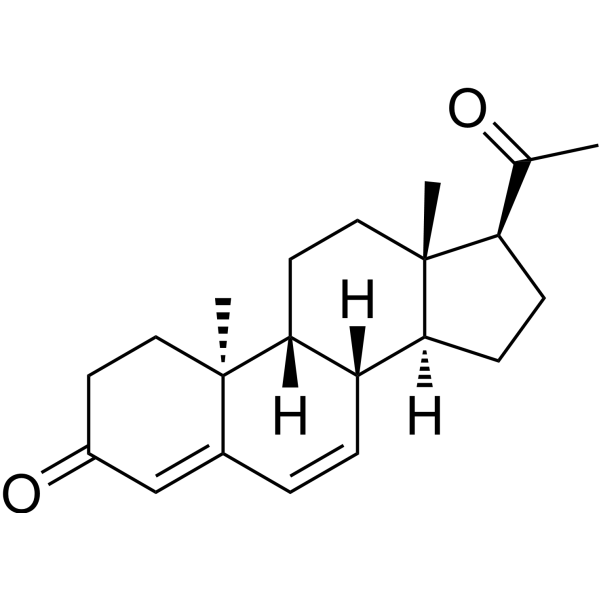
- HY-B0711
-
|
N-Carbamyl-L-glutamic acid
|
Others
|
Cancer
|
|
Carglumic acid (N-Carbamyl-L-glutamic acid), a functional analogue of N-acetylglutamate (NAG) and a carbamoyl phosphate synthetase 1 (CPS1) activator, is used to treat acute and chronic hyperammonemia associated with NAG synthase (NAGS) deficiency.
|
-
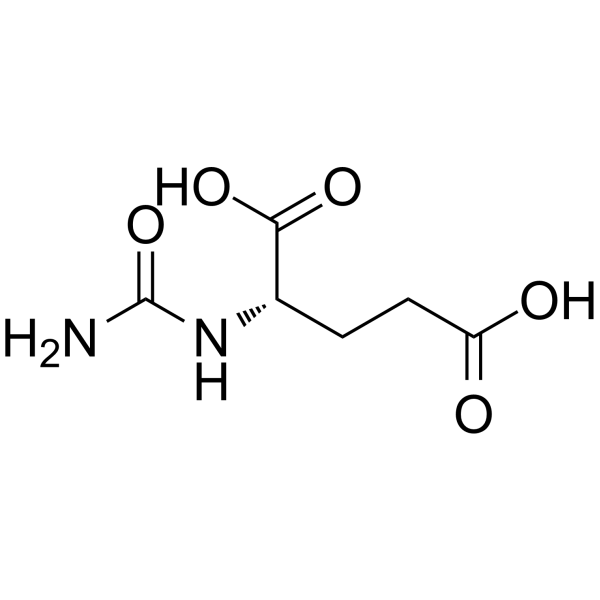
- HY-B2209B
-
|
Vitamin B12a acetate
|
Endogenous Metabolite
|
Metabolic Disease
|
|
Hydroxocobalamin acetate is an injectable naturally occurring form of vitamin B12 with a favorable adverse effect profile, used as a dietary supplement in the research of vitamin B12 deficiency including pernicious anemia .
|
-

- HY-N1428C
-
|
Iron(III) citrate; Zerenex
|
Reactive Oxygen Species
Antibiotic
|
Metabolic Disease
|
|
Ferric citrate (Iron(III) citrate), an orally active iron supplement, is an efficacious phosphate binder. Ferric citratee can be used for iron deficiency anemia and chronic kidney disease (CKD) research .
|
-
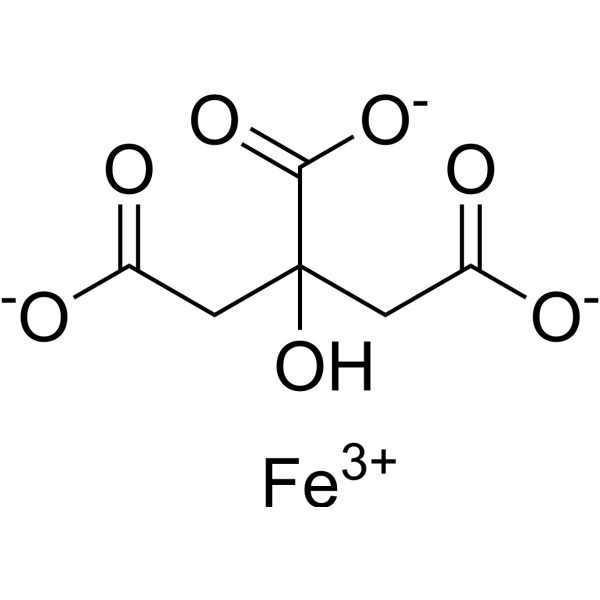
- HY-B2209C
-
|
Vitamin B12a hydrochloride
|
Endogenous Metabolite
|
Metabolic Disease
|
|
Hydroxocobalamin hydrochloride is an injectable naturally occurring form of vitamin B12 with a favorable adverse effect profile, used as a dietary supplement in the research of vitamin B12 deficiency including pernicious anemia .
|
-
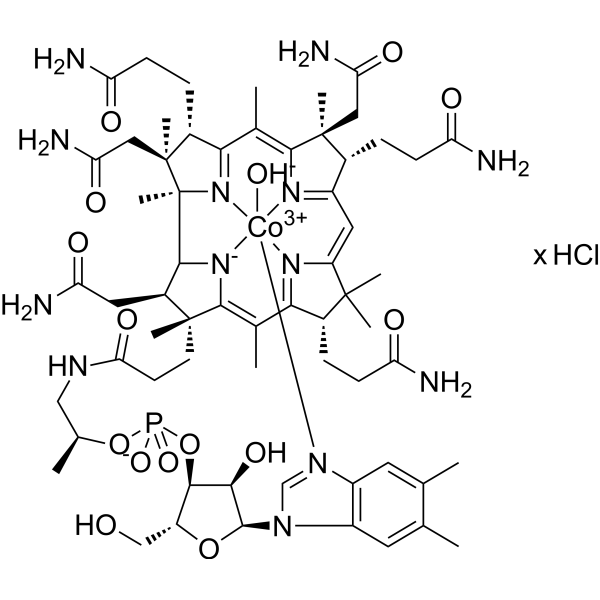
- HY-19702
-
|
|
Pyruvate Kinase
|
Metabolic Disease
Inflammation/Immunology
Cancer
|
|
PKR activator 3 is a pyruvate kinase isoform PKR activator extracted from patent WO2014139144A1, compound 160. PKR activator 3 can be used for the research of PKR function related diseases, including cancer, diabetes, obesity, autoimmune disorders, and benign prostatic hyperplasia .
|
-

- HY-129586
-
|
AT-007
|
Aldose Reductase
|
Metabolic Disease
|
|
Govorestat (AT-007) is an orally active brain-penetrant aldose reductase inhibitor with an IC50 value of 100 pM. Govorestat has the potential for galactose-1-phosphate uridyl transferase deficiency research .
|
-

- HY-113067
-
|
|
Endogenous Metabolite
|
Metabolic Disease
|
|
Phytanic acid is an endogenous metabolite present in Blood that can be used for the research of Zellweger Syndrome, Alpha Methylacyl CoA Racemase Deficiency, Rhizomelic Chondrodysplasia Punctata and Infantile Refsum Disease .
|
-

- HY-N5134S5
-
|
5'-GMP-13C10,15N5 dilithium; 5'-guanosine monophosphate-13C10,15N5 dilithium
|
Isotope-Labeled Compounds
Endogenous Metabolite
|
Metabolic Disease
|
|
5'-Guanylic acid- 13C10, 15N5 (5'-GMP- 13C10, 15N5 dilithium; 5'-guanosine monophosphate- 13C10, 15N5) dilithium is 13C and 15N-labeled 5'-Guanylic acid (HY-N5134). 5'-Guanylic acid (5'-GMP) is involved in several metabolic disorders, including the AICA-ribosiduria pathway, adenosine deaminase deficiency, adenine phosphoribosyltransferase deficiency (aprt), and the 2-hydroxyglutric aciduria pathway.
|
-

- HY-113131
-
|
|
Endogenous Metabolite
|
Metabolic Disease
|
|
Dihydroxyacetone phosphate is an important intermediate in lipid biosynthesis and in glycolysis. It is a biochemical compound involved in many metabolic pathways, including the Calvin cycle in plants and glycolysis. Dihydroxyacetone phosphate is found to be associated with transaldolase deficiency, which is an inborn error of metabolism .
|
-
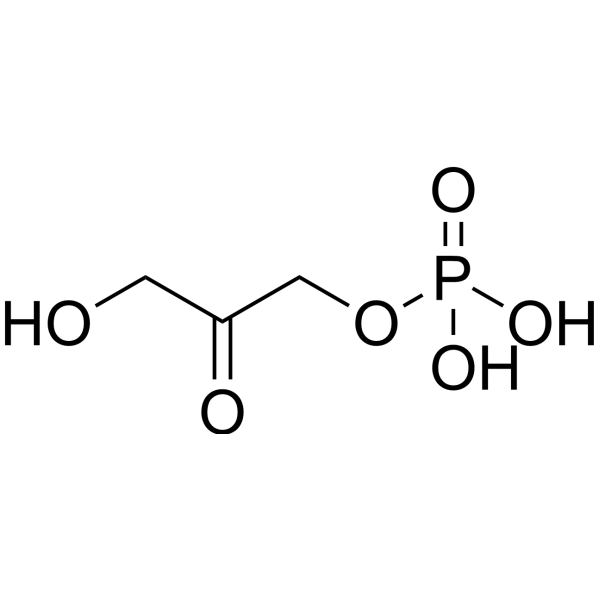
- HY-W012382S
-
|
|
Isotope-Labeled Compounds
Endogenous Metabolite
|
|
|
N-Acetyl-L-tyrosine-d3 is the deuterium labeled N-Acetyl-L-tyrosine. N-Acetyl-L-tyrosine originates from tyrosine through an AA acetylase, is associated with aromatic L-amino acid decarboxylase deficiency and tyrosinemia I.
|
-
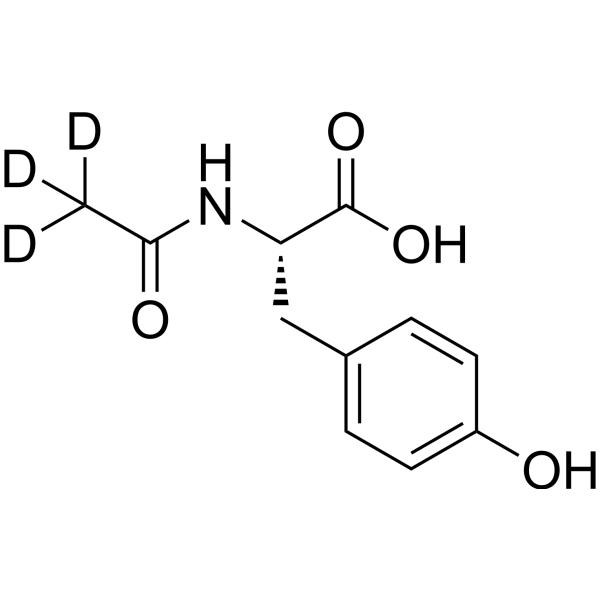
- HY-B2209
-
|
Vitamin B12a
|
Endogenous Metabolite
|
Metabolic Disease
|
|
Hydroxocobalamin (Vitamin B12a) is an injectable naturally occurring form of vitamin B12 with a favorable adverse effect profile, used as a dietary supplement in the treatment of vitamin B12 deficiency including pernicious anemia .
|
-
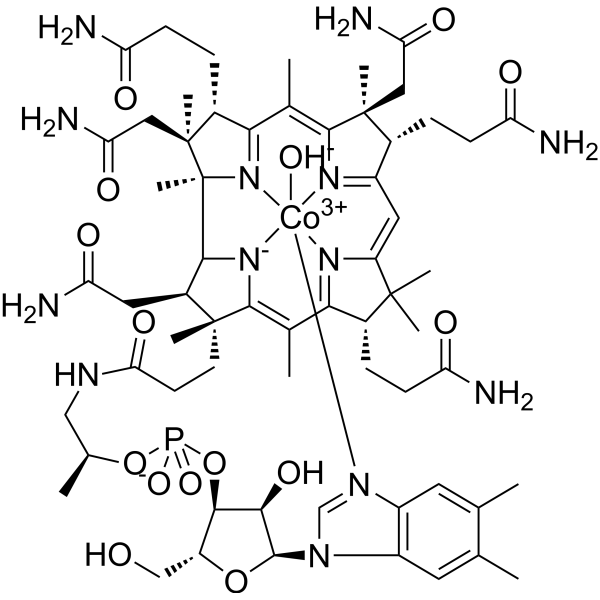
- HY-W145584S
-
-
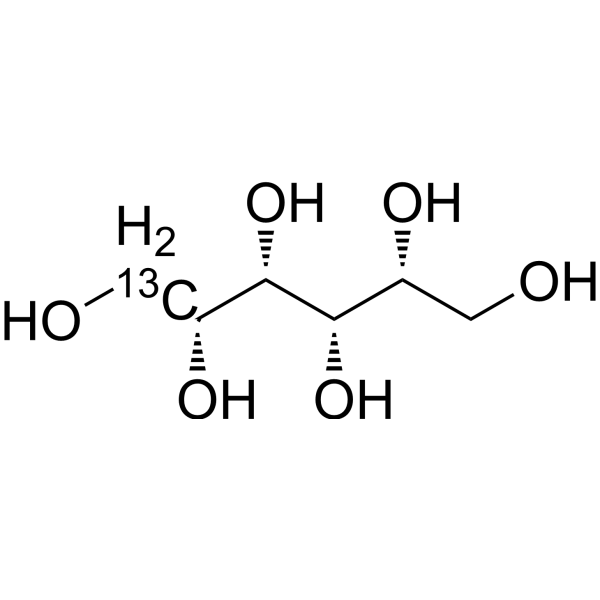
- HY-B2209A
-
|
Vitamin B12a monohydrochloride
|
Endogenous Metabolite
|
Metabolic Disease
|
|
Hydroxocobalamin monohydrochloride (Vitamin B12a monohydrochloride) is an injectable naturally occurring form of vitamin B12 with a favorable adverse effect profile, used as a dietary supplement in the treatment of vitamin B12 deficiency including pernicious anemia .
|
-
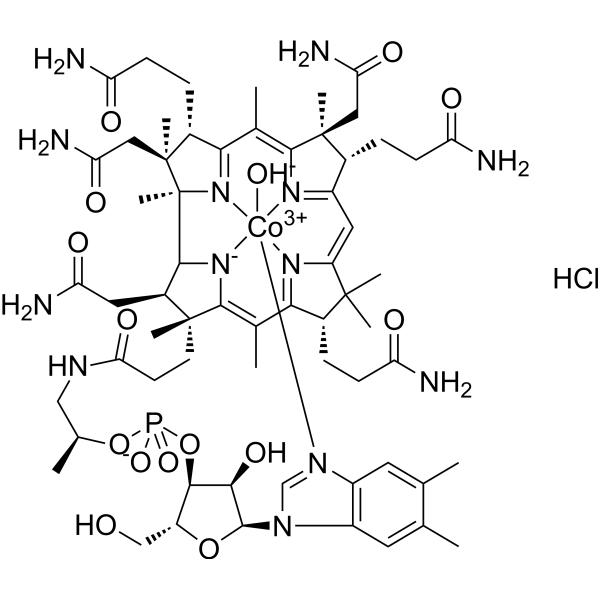
- HY-113131A
-
|
|
Endogenous Metabolite
|
Metabolic Disease
|
|
Dihydroxyacetone phosphate hemimagnesium hydrate is an important intermediate in lipid biosynthesis and in glycolysis. It is a biochemical compound involved in many metabolic pathways, including the Calvin cycle in plants and glycolysis. Dihydroxyacetone phosphate hemimagnesium hydrate is found to be associated with transaldolase deficiency, which is an inborn error of metabolism .
|
-
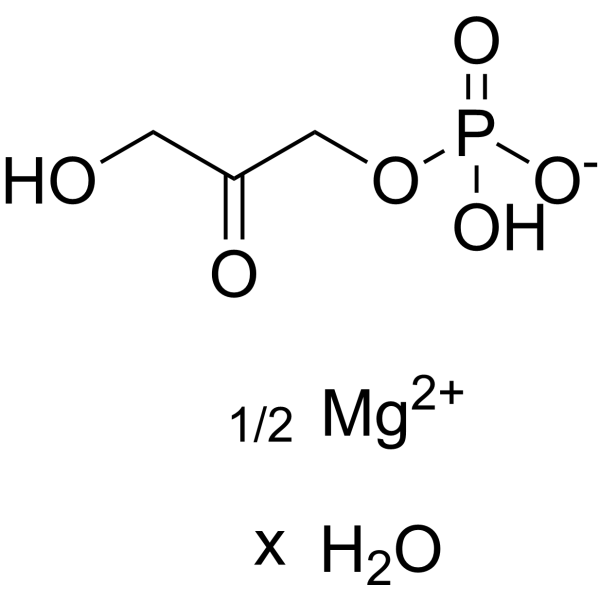
- HY-W010589S
-
|
|
Isotope-Labeled Compounds
Endogenous Metabolite
|
Metabolic Disease
|
|
H-Abu-OH-d3 is the deuterium labeled H-Abu-OH. H-Abu-OH, one of the three isomers of aminobutyric acid, is elevated in the plasma of children with with Reye's syndrome, tyrosinemia, homocystinuria, nonketotic hyperglycinemia, and ornithine transcarbamylase deficiency.
|
-

- HY-W010589S1
-
|
|
Isotope-Labeled Compounds
Endogenous Metabolite
|
|
|
H-Abu-OH-d2 is the deuterium labeled H-Abu-OH. H-Abu-OH, one of the three isomers of aminobutyric acid, is elevated in the plasma of children with with Reye's syndrome, tyrosinemia, homocystinuria, nonketotic hyperglycinemia, and ornithine transcarbamylase deficiency.
|
-
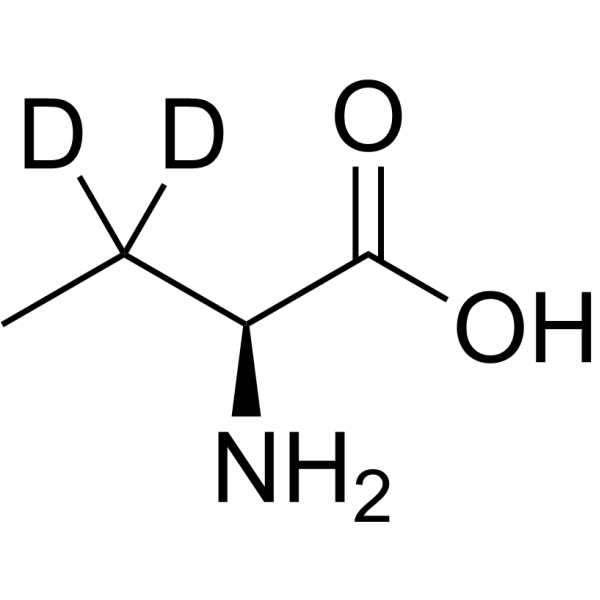
- HY-W010589S2
-
|
|
Isotope-Labeled Compounds
Endogenous Metabolite
|
|
|
H-Abu-OH-d6 is the deuterium labeled H-Abu-OH. H-Abu-OH, one of the three isomers of aminobutyric acid, is elevated in the plasma of children with with Reye's syndrome, tyrosinemia, homocystinuria, nonketotic hyperglycinemia, and ornithine transcarbamylase deficiency.
|
-

- HY-W015883S2
-
|
|
Endogenous Metabolite
|
|
|
Fumaric acid- 13C2,d2 is the deuterium and 13C labeled Fumaric acid[1]. Fumaric acid, associated with fumarase deficiency, is identified as an oncometabolite or an endogenous, cancer causing metabolite[2].
|
-
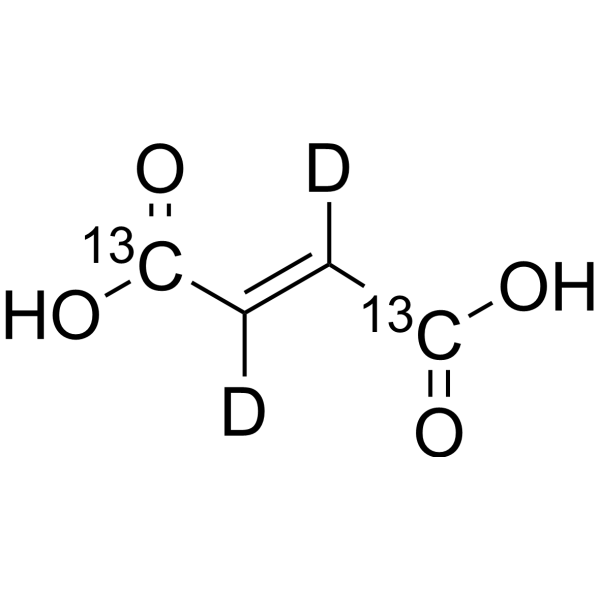
- HY-14820
-
|
EP-1572; AEZS-130
|
GHSR
|
Endocrinology
Cancer
|
|
Macimorelin (EP-1572), a GH secretagogue, is an orally active GHSR agonist. Macimorelin stimulates GH release. Macimorelin can be used in the research of adult growth hormone deficiency (AGHD), and Cancer anorexia-cachexia syndrome (CACS) .
|
-

- HY-14820A
-
|
EP-1572 acetate; AEZS-130 acetate
|
GHSR
|
Neurological Disease
Endocrinology
Cancer
|
|
Macimorelin (EP-1572) acetate, a GH secretagogue, is an orally active GHSR agonist. Macimorelin acetate stimulates GH release. Macimorelin acetate can be used in the research of adult growth hormone deficiency (AGHD), and Cancer anorexia-cachexia syndrome (CACS) .
|
-
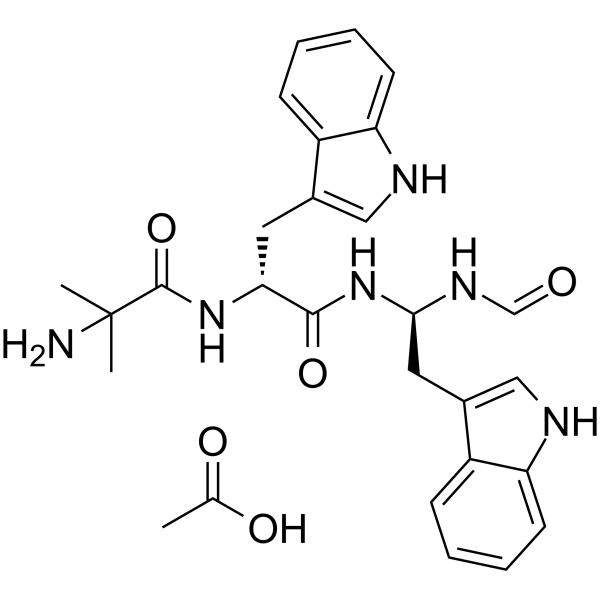
- HY-N5134S4
-
|
5'-GMP-15N5,d12 dilithium; 5'-guanosine monophosphate-15N5,d12 dilithium
|
Isotope-Labeled Compounds
Endogenous Metabolite
|
Metabolic Disease
|
|
5'-Guanylic acid- 15N5,d12 (5'-GMP- 15N5,d12 dilithium; 5'-guanosine monophosphate- 15N5,d12) dilithium is deuterium and 15N labeled 5'-Guanylic acid (HY-N5134). 5'-Guanylic acid (5'-GMP) is involved in several metabolic disorders, including the AICA-ribosiduria pathway, adenosine deaminase deficiency, adenine phosphoribosyltransferase deficiency (aprt), and the 2-hydroxyglutric aciduria pathway.
|
-
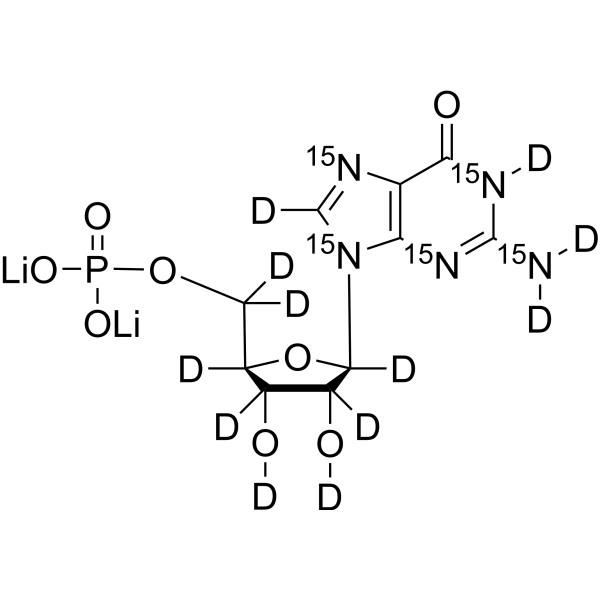
- HY-135884
-
|
AG-946; PKR activator 2
|
Pyruvate Kinase
|
Cardiovascular Disease
|
|
Tebapivat (PKR activator 2) is a potent pyruvate kinase-R (PKR) activator extracted from patent WO2019035863A1, compound 385 .
|
-
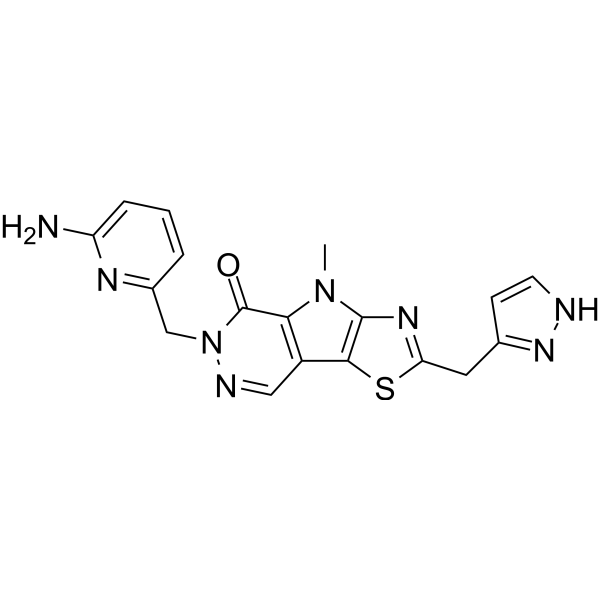
- HY-132167
-
|
AZD5305
|
PARP
|
Cancer
|
|
Saruparib (AZD5305) is a potent, orally active and selective PARP inhibitor and trapper with IC50 values of 3 nM and 1400 nM for PARP1 and PARP2, respectively. Saruparib has anti-proliferative activity and inhibits growth in cells with deficiencies in DNA repair .
|
-
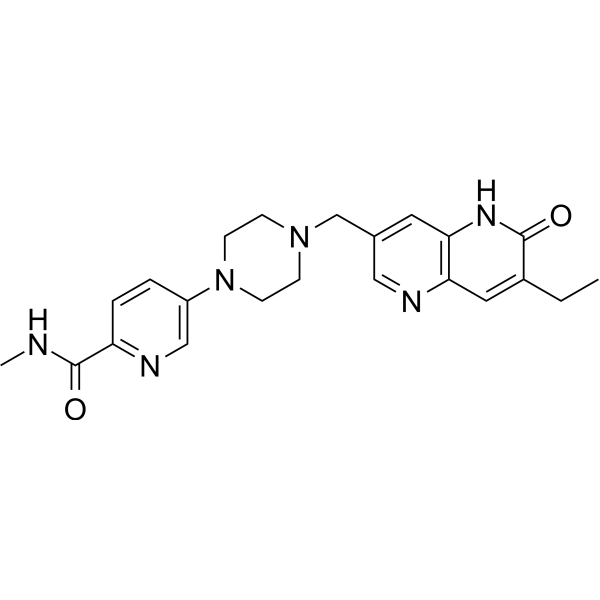
- HY-B1651R
-
|
Ferrous fumarate (Standard)
|
Others
|
Metabolic Disease
Cancer
|
|
Iron(II) fumarate (Standard) is the analytical standard of Iron(II) fumarate. This product is intended for research and analytical applications. Iron(II) fumarate (Ferrous fumarate) is the iron(II) salt of fumaric acid. Iron(II) fumarate is an orally active dietary supplement and has the potential for iron deficiency anemia treatment .
|
-
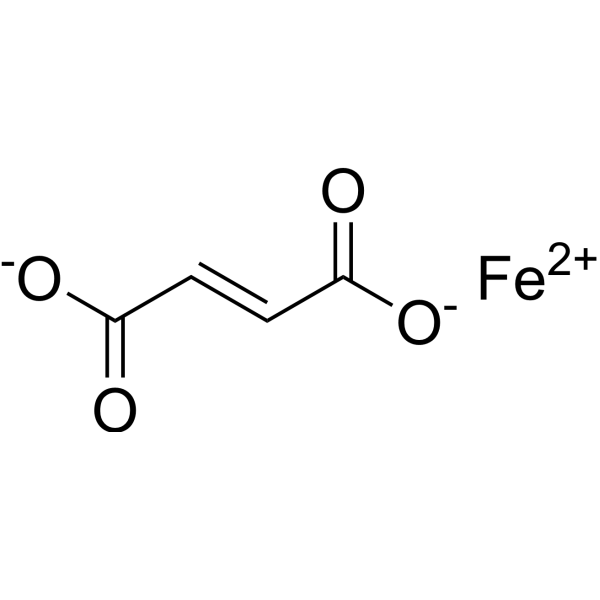
- HY-W017464
-
|
|
Drug Metabolite
Endogenous Metabolite
|
Metabolic Disease
|
|
NAPQI is the toxic metabolite of Acetaminophen (HY-66005). NAPQI is also an inhibitor of enzymes in the vitamin K cycle. NAPQI is rapidly detoxified by glutathione (GSH), but in situations of GSH deficiency, excess NAPQI reacts with cysteine residues in proteins, causing cell death and toxicity in the liver .
|
-
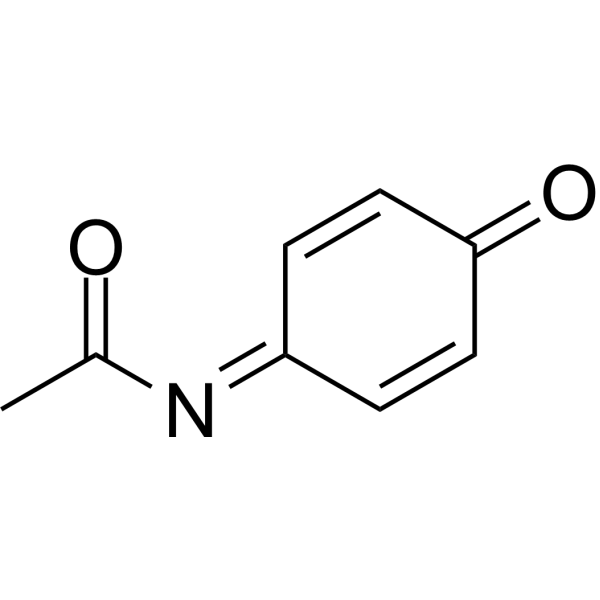
- HY-B0711R
-
|
N-Carbamyl-L-glutamic acid (Standard)
|
Others
|
Cancer
|
|
Carglumic Acid (Standard) is the analytical standard of Carglumic Acid. This product is intended for research and analytical applications. Carglumic acid (N-Carbamyl-L-glutamic acid), a functional analogue of N-acetylglutamate (NAG) and a carbamoyl phosphate synthetase 1 (CPS1) activator, is used to treat acute and chronic hyperammonemia associated with NAG synthase (NAGS) deficiency.
|
-
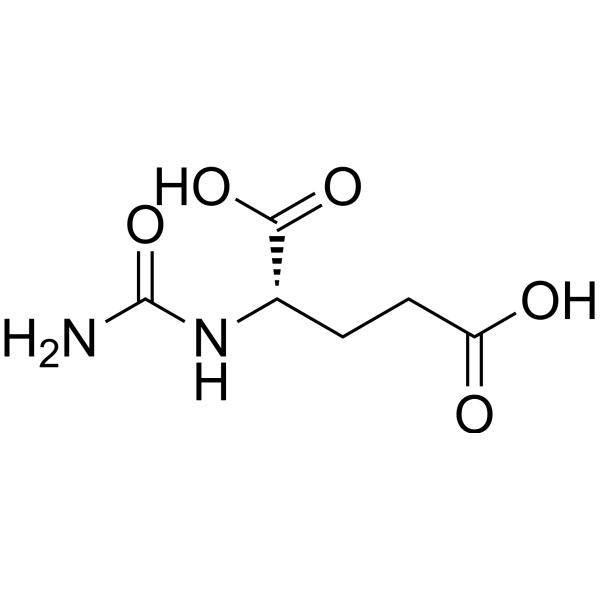
- HY-B2209BR
-
|
Vitamin B12a acetate (Standard)
|
Endogenous Metabolite
|
Metabolic Disease
|
|
Hydroxocobalamin (acetate) (Standard) is the analytical standard of Hydroxocobalamin (acetate). This product is intended for research and analytical applications. Hydroxocobalamin acetate is an injectable naturally occurring form of vitamin B12 with a favorable adverse effect profile, used as a dietary supplement in the research of vitamin B12 deficiency including pernicious anemia .
|
-
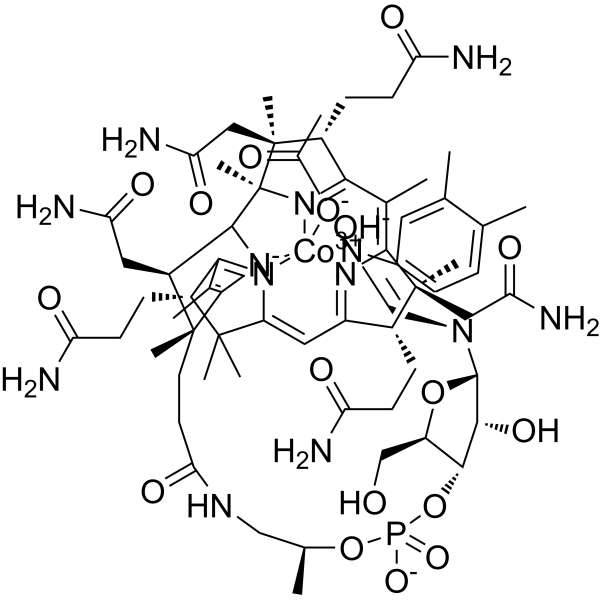
- HY-113410
-
|
|
Endogenous Metabolite
|
Metabolic Disease
|
|
3-Methylglutaric acid, a leucine metabolite, is a conspicuous C6 dicarboxylic organic acid classically associated with two distinct leucine pathway enzyme deficiencies, 3-hydroxy-3-methylglutaryl CoA lyase (HMGCL) and 3-methylglutaconyl CoA hydratase (AUH) .
|
-
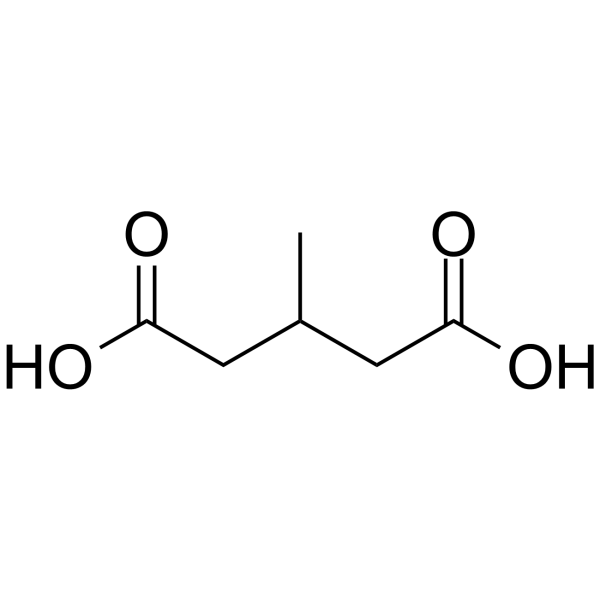
- HY-114518
-
|
KP363
|
Fungal
|
Infection
|
|
Butenafine (KP363) is a potent and broad spectrum benzylamine antifungal agent . Butenafine inhibits fungal ergosterol biosynthesis at the point of squalene epoxidation, leading to a deficiency of the fungal cell membranes. Butenafine is effective against dermatophytes infections, such as tinea pedis, tinea cruris, tinea versicolor .
|
-
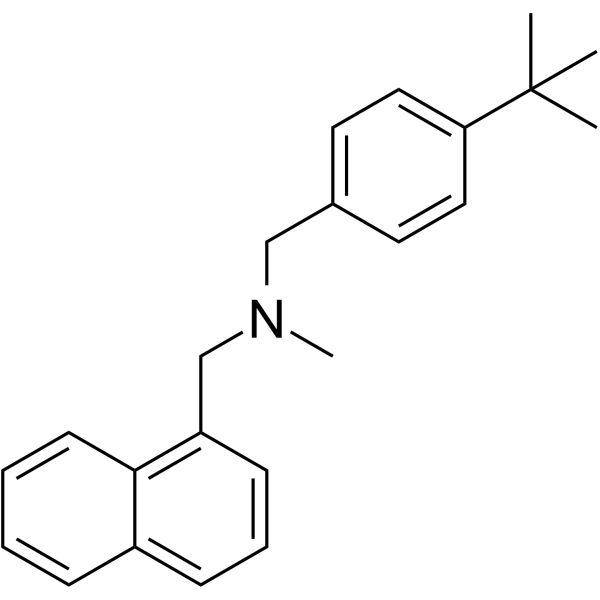
- HY-16274
-
|
TAK-475
|
Others
|
Metabolic Disease
|
|
Lapaquistat acetate (TAK-475) is a squalene synthase inhibitor, blocking the conversion of farnesyl diphosphate (FPP) to squalene in the cholesterol biosynthesis pathway . Lapaquistat acetate is effective at lowering low-density lipoprotein cholesterol, but it might cause liver damage. Lapaquistat acetate is used for hypercholesterolemia and mevalonate kinase deficiency (MKD) research .
|
-
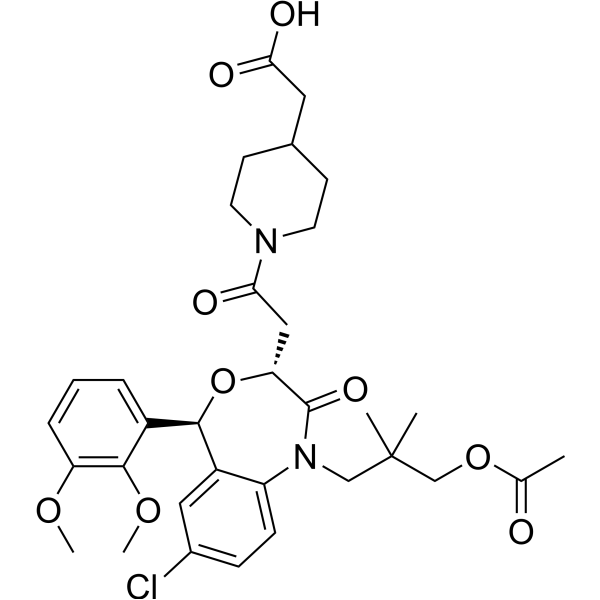
- HY-W127737
-
|
Mecobalamin hydrate
|
Biochemical Assay Reagents
|
Others
|
|
Methylcobalamin Hydrate is a coenzyme required for methionine biosynthesis. Vitamins (hematopoiesis). It acts as a histamine receptor, Alzheimer study. Methylcobalamin is also used in the research of peripheral neuropathy, diabetic neuropathy, and as an initial research for amyotrophic lateral sclerosis. It can be used to prevent or research pathologies caused by vitamin B12 deficiency, such as pernicious anemia.
|
-
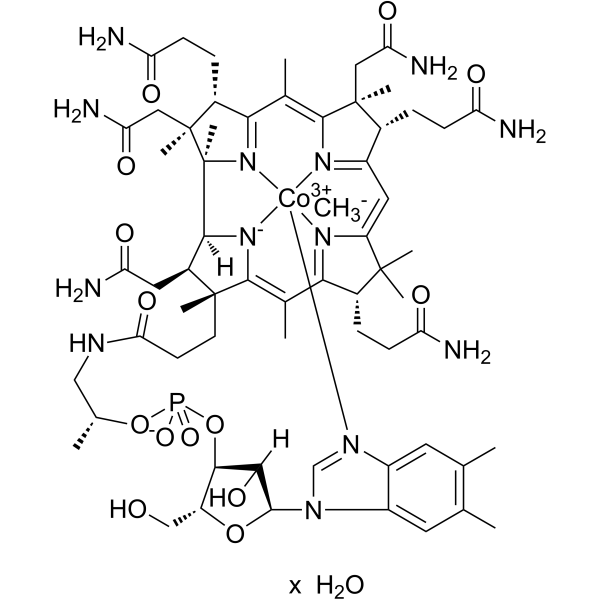
- HY-108293
-
|
|
Estrogen Receptor/ERR
|
Endocrinology
Cancer
|
|
Promestriene is a synthetic diethyl-ether of estradiol and a locally effective estrogen. Promestriene has an efficient action on vaginal atrophy while it is minimally absorbed .
|
-
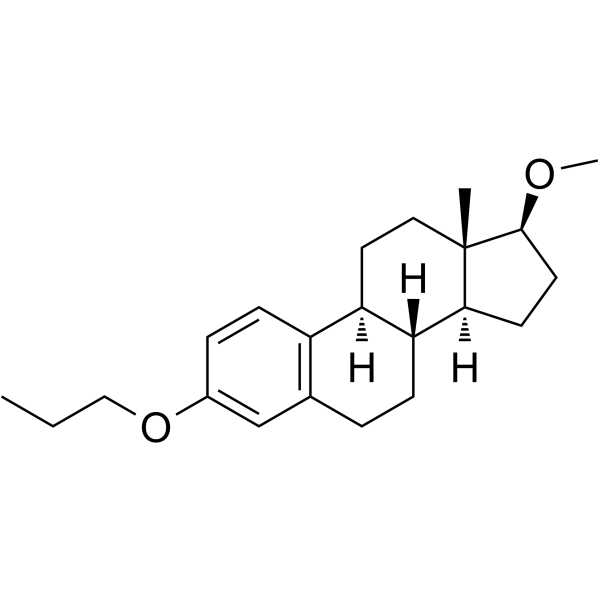
- HY-E70075
-
|
GDH-TIM; GDH-TPI
|
Transketolase
|
Metabolic Disease
|
|
α-Glycerophosphate Dehydrogenase-Triosephosphate (GDH-TIM) is an enzyme mixture composed of glycerol phosphate dehydrogenase (GDH) and triphosphate isomerase (TIM). α-Glycerophosphate Dehydrogenase-Triosephosphate can be used to determine the activity of transketolase (TK) in hemolytic substances of red blood cells to evaluate vitamin B deficiency .
|
-

- HY-113067S
-
|
|
Endogenous Metabolite
|
Metabolic Disease
|
|
Phytanic acid-d3 is the deuterium labeled Phytanic acid[1]. Phytanic acid is an endogenous metabolite present in Blood that can be used for the research of Zellweger Syndrome, Alpha Methylacyl CoA Racemase Deficiency, Rhizomelic Chondrodysplasia Punctata and Infantile Refsum Disease[2][3][4][5][6].
|
-
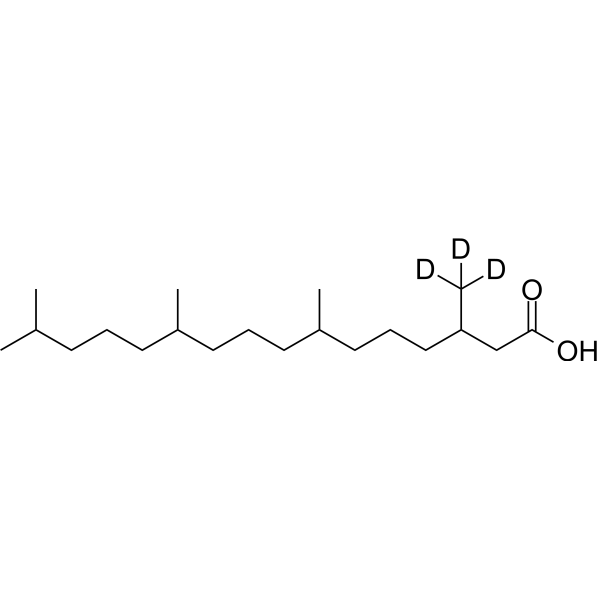
- HY-112483
-
QX77
3 Publications Verification
|
Autophagy
|
Cancer
|
|
QX77 is a chaperone-mediated autophagy (CMA) activator and upregulates LAMP2A expression in vitro. QX77 induces Rab11 upregulation, rescues Rab11 down-regulation and trafficking deficiency in cystinotic cells . QX77 can impede self-renewal and promote differentiation of ES cells .
|
-
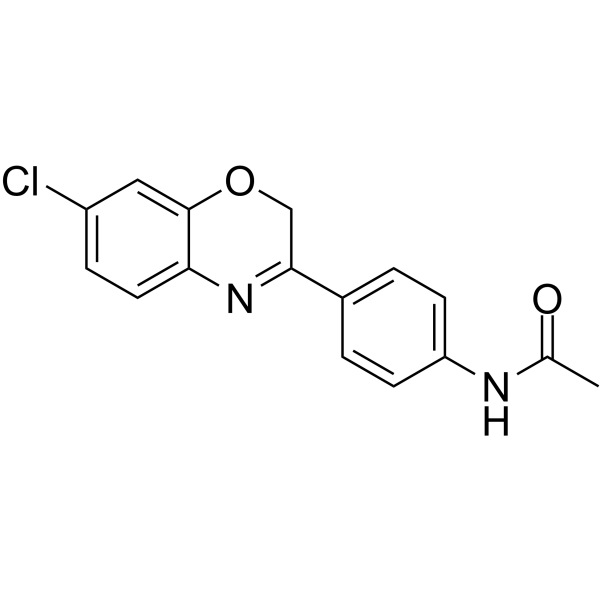
- HY-W017457
-
|
(±)-Penicillamine
|
Others
|
Others
|
|
DL-Penicillamine [(±)-Penicillamine] is a copper chelating agent. DL-Penicillamine has antidotal effects in thallotoxicosis rats when co-treated with Prussian blue (HY-106594A). DL-Penicillamine can cause pyridoxine deficiency and then induce optic axial neuritis. DL-Penicillamine can also depress primary immune response .
|
-

- HY-147379
-
|
|
Others
|
Metabolic Disease
|
|
Hepcidin antagonist-1 (example 104) is a potent hepcidin (hepcidine) antagonist with an IC50<50 μM. Hepcidin antagonist-1 can be used for researching iron metabolism disorders, such as anemias .
|
-
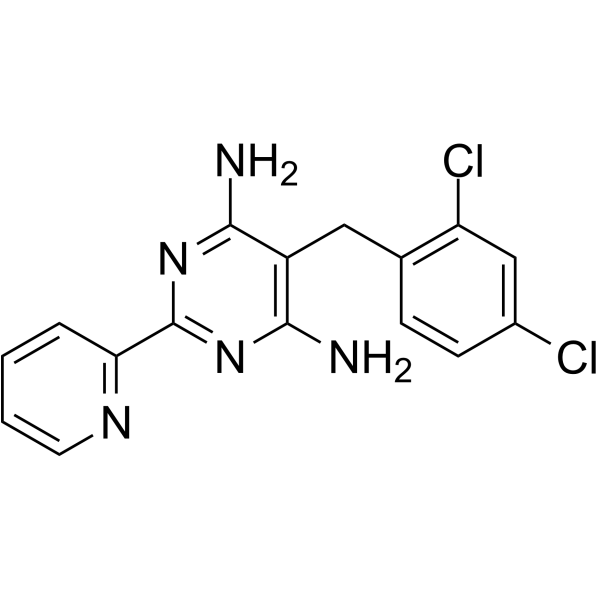
- HY-P2501
-
|
|
Amylin Receptor
|
Metabolic Disease
|
|
Amylin (8-37), human is a fragment of human Amylin. Amylin (8-37), human has direct vasodilator effects in the isolated mesenteric resistance artery of the rat. Human Amylin is a small hormone secreted by pancreatic β-cells that forms aggregates under insulin deficiency metabolic conditions, and it constitutes a pathological hallmark of type II diabetes mellitus .
|
-

- HY-16933
-
|
NSC-153353; SDX-102
|
Antibiotic
|
Infection
Cancer
|
|
L-Alanosine (NSC-153353), an antibiotic from Streptomyces alanosinicus, has antineoplastic activity. L-Alanosine (NSC-153353) inhibits adenylosuccinate synthetase, which converts inosine monophospate (IMP) into adenylosuccinate. L-Alanosine (NSC-153353) blocks the common de novo purine biosynthesis pathway and, thereby, inhibits tumor cells with MTAP deficiency .
|
-
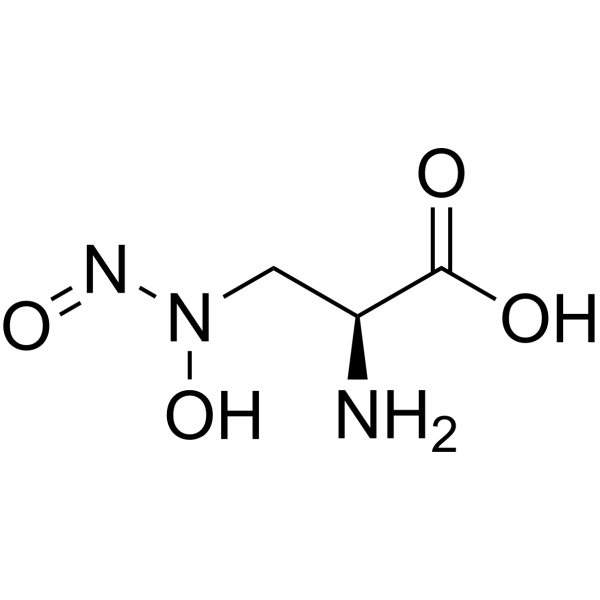
- HY-P2724
-
|
PNP
|
Endogenous Metabolite
|
Metabolic Disease
|
|
Purine nucleoside phosphorylase, Microorganism (PNP) is a key enzyme in purine metabolism, which is involved in the purine rescue pathway. The deficiency of Purine nucleoside phosphorylase resulted in impaired T cell function. In the presence of inorganic orthophosphate as the second substrate, Purine nucleoside phosphorylase catalyzes the breaking of the glycosidic bond between ribose and deoxyribonucleoside to generate purine base and ribose (deoxyribose) -1-phosphate .
|
-

- HY-100237
-
|
|
E1/E2/E3 Enzyme
Apoptosis
|
Cancer
|
|
SZL P1-41 is a specific Skp2 inhibitor, binds to the F-box domain of Skp2 to prevent Skp1 association and Skp2 SCF complex formation. SZL P1-41, like Skp2 deficiency, augments p27-mediated apoptosis/senescence, while it impairs Akt-driven glycolysis. Anti-tumor activities .
|
-

- HY-113410S
-
|
|
Endogenous Metabolite
|
Metabolic Disease
|
|
3-Methylglutaric acid-d4 is the deuterium labeled 3-Methylglutaric acid[1]. 3-Methylglutaric acid, a leucine metabolite, is a conspicuous C6 dicarboxylic organic acid classically associated with two distinct leucine pathway enzyme deficiencies, 3-hydroxy-3-methylglutaryl CoA lyase (HMGCL) and 3-methylglutaconyl CoA hydratase (AUH)[2][3].
|
-
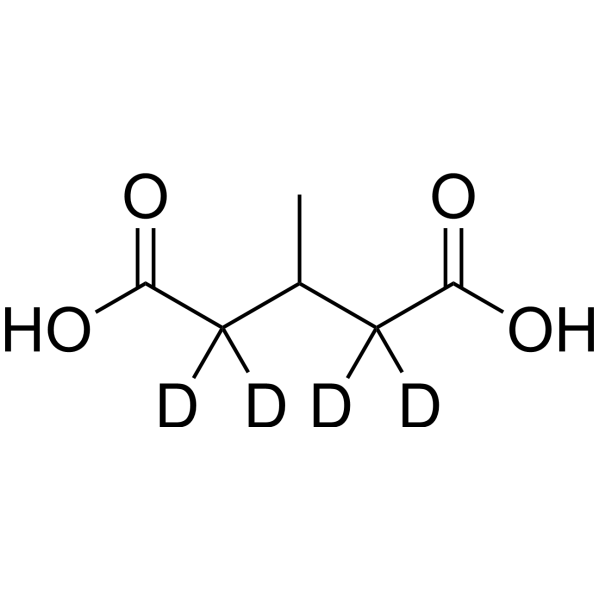
- HY-E70188
-
|
EC:3.1.6.4; GALNS
|
Biochemical Assay Reagents
|
Cancer
|
|
N-Acetylgalactosamine-6-Sulfatase (GALNS) is a potential general biomarker for multiple malignancies (such as lung cancer, breast cancer, head and neck cancer, etc.). N-Acetylgalactosamine-6-Sulfatase deficiency causes mucopolysaccharidosis type IVA (MPS IVA), also known as Morquio A syndrome. N-Acetylgalactosamine-6-Sulfatase can be used in MPS IVA as well as cancer research .
|
-

- HY-155525
-
|
|
PPAR
|
Metabolic Disease
Inflammation/Immunology
|
|
Anti-NASH agent 1 (compound 3d),a derivative of Elafibranor (HY-16737),is a potent agonist of PPAR-α/δ,targeting to nonalcoholic steatohepatitis (NASH). Anti-NASH agent 1 (3-10 mg/kg; 4 weeks) improves hyperlipidemia,liver fat degeneration and liver inflammation in Methionine-choline deficiency (MCD) induced NASH mice model. Anti-NASH agent 1 shows low liver toxicity and potent liver protection effect .
|
-

- HY-122292
-
|
|
Antibiotic
Bacterial
|
Infection
Inflammation/Immunology
|
|
Celastramycin A is an antibiotic isolated from Streptomyces MaB-QuH-8, which exhibits antimicrobial activity against series of gram-negative bacteria and mycobacteria, with MICs between 0.05-3.1 μg/ml . Celastramycin A exhibits immunosuppressing efficacy in ex vivo Drosophila through immune deficiency pathway (IC50 of 0.008 μg/ml), inhibits the immunoresponse in human innate immunity through TNF-α signaling, inhibits IL-8 production in HUEVCs with IC50 of 0.06 μg/ml .
|
-
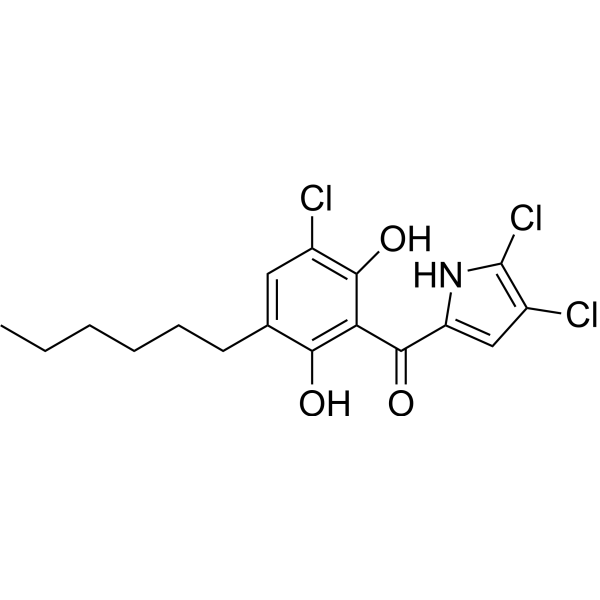
- HY-117081
-
|
|
Others
|
Others
|
|
C30(ω-hydroxy) Ceramide (d18:1/30:0), a sphingolipid, is an epidermis-specifically vital component of the water barrier in mammalian skin. C30(ω-hydroxy) Ceramide (d18:1/30:0) is expressed in epidermal keratinocytes and male germ cells during their differentiation and maturation. C30(ω-hydroxy) Ceramide (d18:1/30:0) deficiency in the epiderm of Elovl4 deletion or mutation mice .
|
-
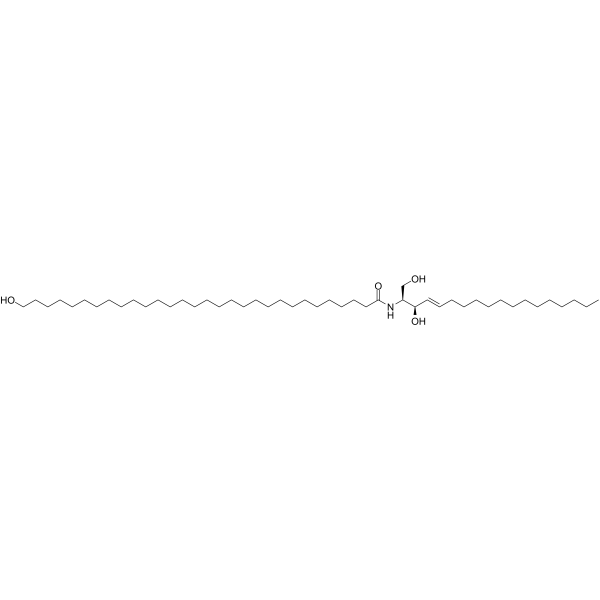
- HY-108433
-
|
Carnitine palmitoyltransferase 2
|
Apoptosis
MDM-2/p53
|
Metabolic Disease
Cancer
|
|
CPT2 (Carnitine palmitoyltransferase 2), an enzyme that participates in fatty acid oxidation, also is a colorectal cancer (CRC) prognostic biomarker. CPT2 overexpression can activate p-p53 to increase p53 expression, thereby inhibiting tumor proliferation and promoting apoptosis. CPT2 deficiency results in the most common inherited disorder of long-chain fatty acid oxidation affecting skeletal muscle. Downregulation of CPT2 is also highly correlated with the progression of various cancers and has potential for cancer research .
|
-

- HY-16637D
-
|
Vitamin B9 disodium; Vitamin M disodium
|
Endogenous Metabolite
|
Others
Neurological Disease
Cancer
|
|
Folic acid disodium (Vitamin B9 disodium; Vitamin M disodium) is an orally active disodium salt form of Folic acid (HY-16637) with an intrinsic dissolution rate (IDR) of 4.96·10 5 g/s . Folic acid disodium serves as cofactor in single-carbon transfer reactions and exhibits protective effects against neural tube defects, ischemic events, and cancer. Folate acid disodium overload leads to impaired brain development in embryogenesis and promotes growth of precancerous altered cells. Folic acid deficiency leads to megaloblastic anemia .
|
-

- HY-147509
-
|
|
Fluorescent Dye
|
Others
|
|
SBP-3 is a sulfite bioluminescent probe (SBP). The recognition of SBP-3 towards sulfite is based on the mechanism of a sulfite-mediated intramolecular cleavage reaction .
|
-
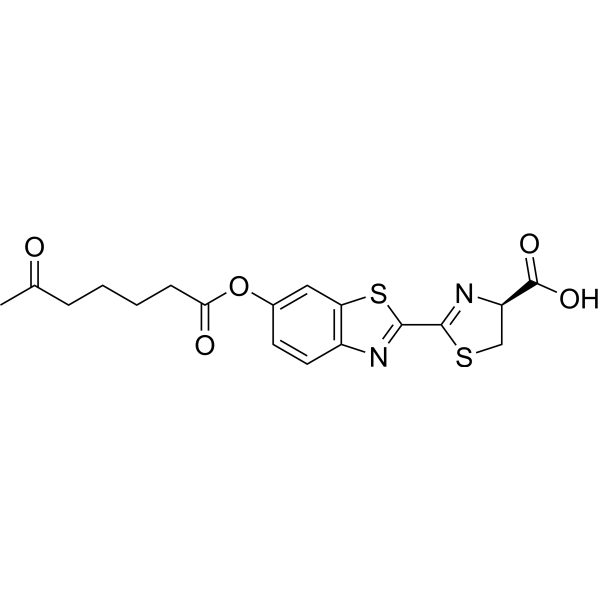
- HY-147508
-
|
|
Fluorescent Dye
|
Others
|
|
SBP-2 is a sulfite bioluminescent probe (SBP). The recognition of SBP-2 towards sulfite is based on the mechanism of a sulfite-mediated intramolecular cleavage reaction .
|
-
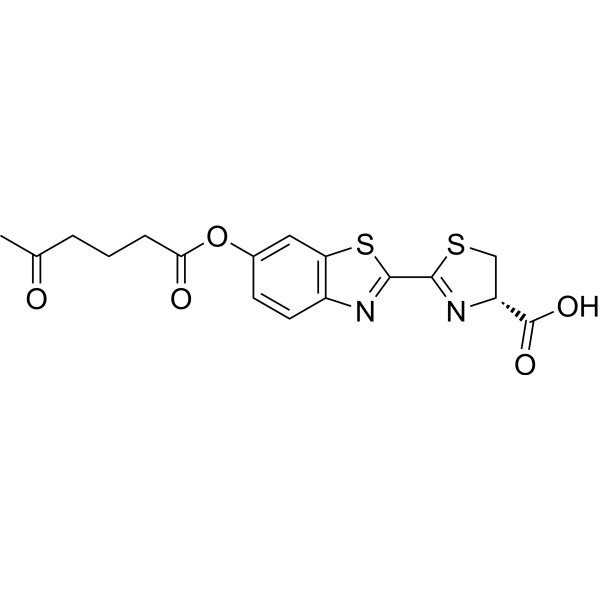
- HY-12040
-
|
STA-4783
|
Reactive Oxygen Species
Apoptosis
Cuproptosis
|
Cancer
|
|
Elesclomol (STA-4783) is a potent copper ionophore and promotes copper-dependent cell death (cuproptosis). Elesclomol specifically binds ferredoxin 1 (FDX1) α2/α3 helices and β5 strand. Elesclomol inhibits FDX1-mediated Fe-S cluster biosynthesis. Elesclomol is an oxidative stress inducer that induces cancer cell apoptosis. Elesclomol is a reactive oxygen species (ROS) inducer. Elesclomol can be used for Menkes and associated disorders of hereditary copper deficiency research .
|
-

- HY-W127461
-
|
Gangliotriosylceramide
|
Biochemical Assay Reagents
|
Others
|
|
Ganglioside GM2 asialo (asialo-GM2) is a glycosphingolipid containing three monosaccharide residues and one fatty acid of variable chain length, but lacks the sialic acid residue present on ganglioside M2. Asialo-GM2 is found at low or undetectable levels in normal human brains, but it accumulates in the brains of patients with Tay-Sachs disease and Sandhoff disease, which are expressed as lysosomal β- A neurodegenerative disorder characterized by hexosaminidase A and B deficiency. It also binds to various bacteria, including Pseudomonas isolated from cystic fibrosis patients. The Asialo-GM2 mixture contains ganglioside GM2 asialo molecular species with fatty acyl chains of variable length.
|
-
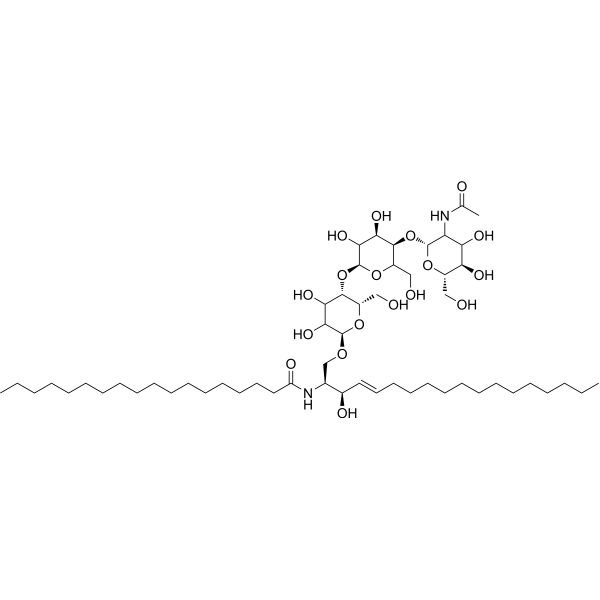
- HY-147507
-
|
|
Fluorescent Dye
|
Others
|
|
SBP-1 is a sulfite bioluminescent probe (SBP). SBP-1 exhibits the excellent responsivity, selectivity and sensitivity towards sulfite. The recognition of SBP-1 towards sulfite is based on the mechanism of a sulfite-mediated intramolecular cleavage reaction. SBP-1 can be used for detection of exogenous and endogenous sulfite in living animal. SBP-1 also possesses a capability for quantitatively detecting sulfite within a certain concentration range in solution .
|
-
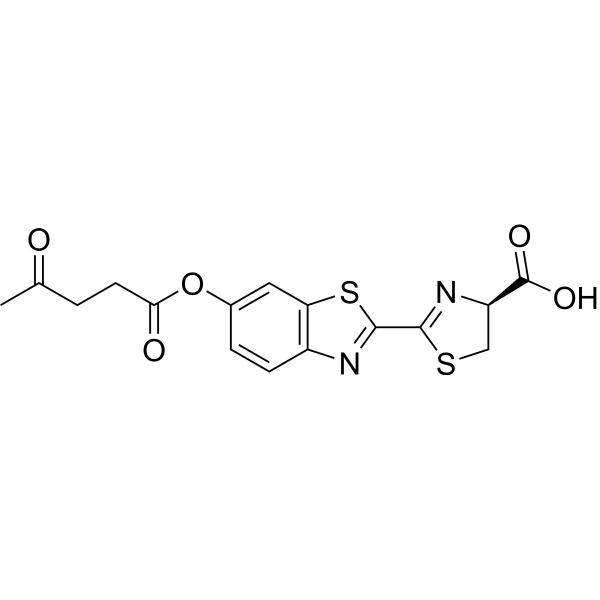
| Cat. No. |
Product Name |
Type |
-
- HY-D1632
-
|
|
Fluorescent Dyes/Probes
|
|
4-MU-α-GlcNS sodium is a fluorogenic substrate of heparin sulphamidase, is desulfurized into 4-MU-α-GlcNH2. 4-MU-α-GlcNH2 can liberate 4-methylumbelliferone (4-MU, fluorescent product) via α-glucosaminidase catalysis, with the emission wavelength maxima of 445-454 nm. 4-MU-α-GlcNS sodium can be used to heparin sulphamidase deficiencies associated with Mucopolisaccaridosis IIIA and other lysosomal disorders researches .
|
| Cat. No. |
Product Name |
Type |
-
- HY-W127737
-
|
Mecobalamin hydrate
|
Biochemical Assay Reagents
|
|
Methylcobalamin Hydrate is a coenzyme required for methionine biosynthesis. Vitamins (hematopoiesis). It acts as a histamine receptor, Alzheimer study. Methylcobalamin is also used in the research of peripheral neuropathy, diabetic neuropathy, and as an initial research for amyotrophic lateral sclerosis. It can be used to prevent or research pathologies caused by vitamin B12 deficiency, such as pernicious anemia.
|
-
- HY-E70075
-
|
GDH-TIM; GDH-TPI
|
Biochemical Assay Reagents
|
|
α-Glycerophosphate Dehydrogenase-Triosephosphate (GDH-TIM) is an enzyme mixture composed of glycerol phosphate dehydrogenase (GDH) and triphosphate isomerase (TIM). α-Glycerophosphate Dehydrogenase-Triosephosphate can be used to determine the activity of transketolase (TK) in hemolytic substances of red blood cells to evaluate vitamin B deficiency .
|
-
- HY-E70188
-
|
EC:3.1.6.4; GALNS
|
Enzyme Substrates
|
|
N-Acetylgalactosamine-6-Sulfatase (GALNS) is a potential general biomarker for multiple malignancies (such as lung cancer, breast cancer, head and neck cancer, etc.). N-Acetylgalactosamine-6-Sulfatase deficiency causes mucopolysaccharidosis type IVA (MPS IVA), also known as Morquio A syndrome. N-Acetylgalactosamine-6-Sulfatase can be used in MPS IVA as well as cancer research .
|
-
- HY-108433
-
|
Carnitine palmitoyltransferase 2
|
Biochemical Assay Reagents
|
|
CPT2 (Carnitine palmitoyltransferase 2), an enzyme that participates in fatty acid oxidation, also is a colorectal cancer (CRC) prognostic biomarker. CPT2 overexpression can activate p-p53 to increase p53 expression, thereby inhibiting tumor proliferation and promoting apoptosis. CPT2 deficiency results in the most common inherited disorder of long-chain fatty acid oxidation affecting skeletal muscle. Downregulation of CPT2 is also highly correlated with the progression of various cancers and has potential for cancer research .
|
-
- HY-W127461
-
|
Gangliotriosylceramide
|
Biochemical Assay Reagents
|
|
Ganglioside GM2 asialo (asialo-GM2) is a glycosphingolipid containing three monosaccharide residues and one fatty acid of variable chain length, but lacks the sialic acid residue present on ganglioside M2. Asialo-GM2 is found at low or undetectable levels in normal human brains, but it accumulates in the brains of patients with Tay-Sachs disease and Sandhoff disease, which are expressed as lysosomal β- A neurodegenerative disorder characterized by hexosaminidase A and B deficiency. It also binds to various bacteria, including Pseudomonas isolated from cystic fibrosis patients. The Asialo-GM2 mixture contains ganglioside GM2 asialo molecular species with fatty acyl chains of variable length.
|
| Cat. No. |
Product Name |
Target |
Research Area |
-
- HY-P2501
-
|
|
Amylin Receptor
|
Metabolic Disease
|
|
Amylin (8-37), human is a fragment of human Amylin. Amylin (8-37), human has direct vasodilator effects in the isolated mesenteric resistance artery of the rat. Human Amylin is a small hormone secreted by pancreatic β-cells that forms aggregates under insulin deficiency metabolic conditions, and it constitutes a pathological hallmark of type II diabetes mellitus .
|
| Cat. No. |
Product Name |
Category |
Target |
Chemical Structure |
- HY-W017464
-
-

- HY-B0711R
-
|
N-Carbamyl-L-glutamic acid (Standard)
|
Human Gut Microbiota Metabolites
Microorganisms
Source classification
Endogenous metabolite
|
Others
|
|
Carglumic Acid (Standard) is the analytical standard of Carglumic Acid. This product is intended for research and analytical applications. Carglumic acid (N-Carbamyl-L-glutamic acid), a functional analogue of N-acetylglutamate (NAG) and a carbamoyl phosphate synthetase 1 (CPS1) activator, is used to treat acute and chronic hyperammonemia associated with NAG synthase (NAGS) deficiency.
|
-

- HY-B2209BR
-
|
Vitamin B12a acetate (Standard)
|
Structural Classification
Natural Products
Source classification
Endogenous metabolite
|
Endogenous Metabolite
|
|
Hydroxocobalamin (acetate) (Standard) is the analytical standard of Hydroxocobalamin (acetate). This product is intended for research and analytical applications. Hydroxocobalamin acetate is an injectable naturally occurring form of vitamin B12 with a favorable adverse effect profile, used as a dietary supplement in the research of vitamin B12 deficiency including pernicious anemia .
|
-

- HY-113410
-
-

- HY-122292
-
|
|
Structural Classification
Animals
Antibiotics
Source classification
|
Antibiotic
Bacterial
|
|
Celastramycin A is an antibiotic isolated from Streptomyces MaB-QuH-8, which exhibits antimicrobial activity against series of gram-negative bacteria and mycobacteria, with MICs between 0.05-3.1 μg/ml . Celastramycin A exhibits immunosuppressing efficacy in ex vivo Drosophila through immune deficiency pathway (IC50 of 0.008 μg/ml), inhibits the immunoresponse in human innate immunity through TNF-α signaling, inhibits IL-8 production in HUEVCs with IC50 of 0.06 μg/ml .
|
-

- HY-117081
-
-

| Cat. No. |
Product Name |
Chemical Structure |
-
- HY-W017522S3
-
|
|
|
Adipic acid- 13C is the 13C labeled Adipic acid[1]. Adipic acid is found to be associated with HMG-CoA lyase deficiency, carnitine-acylcarnitine translocase deficiency, malonyl-Coa decarboxylase deficiency, and medium Chain acyl-CoA dehydrogenase deficiency, which are inborn errors of metabolism[2].
|
-

-
- HY-N0384S2
-
|
|
|
Homovanillic acid-d5 is the deuterium labeled Homovanillic acid. Homovanillic acid is a dopamine metabolite found to be associated with aromatic L-amino acid decarboxylase deficiency, celiac disease, growth hormone deficiency, and sepiapterin reductase deficiency.
|
-

-
- HY-N0384S
-
|
|
|
Homovanillic acid-d3 is the deuterium labeled Homovanillic acid. Homovanillic acid is a dopamine metabolite found to be associated with aromatic L-amino acid decarboxylase deficiency, celiac disease, growth hormone deficiency, and sepiapterin reductase deficiency.
|
-

-
- HY-W017522S6
-
|
|
|
Adipic acid- 13C2 is 13C labeled Adipic acid. Adipic acid is found to be associated with HMG-CoA lyase deficiency, carnitine-acylcarnitine translocase deficiency, malonyl-Coa decarboxylase deficiency, and medium Chain acyl-CoA dehydrogenase deficiency, which are inborn errors of metabolism.
|
-

-
- HY-N0384S1
-
|
|
|
Homovanillic acid-d2 is the deuterium labeled Homovanillic acid. Homovanillic acid is a dopamine metabolite found to be associated with aromatic L-amino acid decarboxylase deficiency, celiac disease, growth hormone deficiency, and sepiapterin reductase deficiency.
|
-

-
- HY-W015300S
-
|
|
|
Suberic acid-d4 is the deuterium labeled Suberic acid[1]. Suberic acid (Octanedioic acid) is found to be associated with carnitine-acylcarnitine translocase deficiency, malonyl-Coa decarboxylase deficiency[2].
|
-

-
- HY-W015300S1
-
|
|
|
Suberic acid-d12 is the deuterium labeled Suberic acid[1]. Suberic acid (Octanedioic acid) is found to be associated with carnitine-acylcarnitine translocase deficiency, malonyl-Coa decarboxylase deficiency[2].
|
-

-
- HY-W017522S
-
|
|
|
Adipic acid-d10 is the deuterium labeled Adipic acid[1]. Adipic acid is found to be associated with HMG-CoA lyase deficiency, carnitine-acylcarnitine translocase deficiency, malonyl-Coa decarboxylase deficiency, and medium Chain acyl-CoA dehydrogenase deficiency, which are inborn errors of metabolism[2].
|
-

-
- HY-W017522S1
-
|
|
|
Adipic acid- 13C6 is the 13C labeled Adipic acid[1]. Adipic acid is found to be associated with HMG-CoA lyase deficiency, carnitine-acylcarnitine translocase deficiency, malonyl-Coa decarboxylase deficiency, and medium Chain acyl-CoA dehydrogenase deficiency, which are inborn errors of metabolism[2].
|
-

-
- HY-W017522S2
-
|
|
|
Adipic acid-d4 is the deuterium labeled Adipic acid[1]. Adipic acid is found to be associated with HMG-CoA lyase deficiency, carnitine-acylcarnitine translocase deficiency, malonyl-Coa decarboxylase deficiency, and medium Chain acyl-CoA dehydrogenase deficiency, which are inborn errors of metabolism[2].
|
-

-
- HY-W017522S4
-
|
|
|
Adipic acid-d8 is the deuterium labeled Adipic acid[1]. Adipic acid is found to be associated with HMG-CoA lyase deficiency, carnitine-acylcarnitine translocase deficiency, malonyl-Coa decarboxylase deficiency, and medium Chain acyl-CoA dehydrogenase deficiency, which are inborn errors of metabolism[2].
|
-

-
- HY-W017522S5
-
|
|
|
Adipic acid-d4-1 is the deuterium labeled Adipic acid[1]. Adipic acid is found to be associated with HMG-CoA lyase deficiency, carnitine-acylcarnitine translocase deficiency, malonyl-Coa decarboxylase deficiency, and medium Chain acyl-CoA dehydrogenase deficiency, which are inborn errors of metabolism[2].
|
-

-
- HY-N0384S3
-
|
|
|
Homovanillic acid- 13C6, 18O is the 13C-labeled Homovanillic acid. Homovanillic acid is a dopamine metabolite found to be associated with aromatic L-amino acid decarboxylase deficiency, celiac disease, growth hormone deficiency, and sepiapterin reductase deficiency.
|
-

-
- HY-W014787S
-
|
|
|
Decanedioic acid-d4 is the deuterium labeled Decanedioic acid[1]. Decanedioic acid, a normal urinary acid, is found to be associated with carnitine-acylcarnitine translocase deficiency and medium chain acyl-CoA dehydrogenase deficiency[2].
|
-

-
- HY-W014787S1
-
|
|
|
Decanedioic acid-d16 is the deuterium labeled Decanedioic acid[1]. Decanedioic acid, a normal urinary acid, is found to be associated with carnitine-acylcarnitine translocase deficiency and medium chain acyl-CoA dehydrogenase deficiency[2].
|
-

-
- HY-N0384S4
-
|
|
|
Homovanillic acid-d3-1 (Vanilacetic acid-d3-1) is deuterated labeled Homovanillic acid (HY-N0384). Homovanillic acid is a dopamine metabolite associated with aromatic amino acid decarboxylase deficiency, celiac disease, growth hormone deficiency, and adiponectin reductase deficiency .
|
-

-
- HY-108398AS
-
|
|
|
Mead acid-d6 is the deuterium labeled Mead acid. Mead acid (5,8,11-Eicosatrienoic acid), an unsaturated (Omega-9) fatty acid, is an indicator of essential fatty acid deficiency[1].
|
-

-
- HY-128790S1
-
|
|
|
4-Methoxyestrone- 13C6 is a 13C-labeled 5'-Guanylic acid. 5'-Guanylic acid (5'-GMP) is involved in several metabolic disorders, including the AICA-ribosiduria pathway, adenosine deaminase deficiency, adenine phosphoribosyltransferase deficiency (aprt), and
|
-

-
- HY-W015883S
-
|
|
|
Fumaric acid- 13C4 is the 13C-labeled Fumaric acid. Fumaric acid, associated with fumarase deficiency, is identified as an oncometabolite or an endogenous, cancer causing metabolite.
|
-

-
- HY-34740S
-
|
|
|
Ethylmalonic acid-d3 is the deuterium labeled Ethylmalonic acid. Ethylmalonic acid is non-carcinogenic potentially toxic and associated with anorexia nervosa and malonyl-CoA decarboxylase deficiency.
|
-

-
- HY-B0257AS
-
|
|
|
Dydrogesterone-d6 is the deuterium labeled Dydrogesterone. Dydrogesterone is a potent, orally active progestogen indicated in a wide variety of gynaecological conditions related to progesterone deficiency.
|
-

-
- HY-103395S
-
|
|
|
Methylmalonic acid-d3 is the deuterium labeled Methylmalonic acid. Methylmalonic acid (Methylmalonate) is an indicator of Vitamin B-12 deficiency in cancer[1][2].
|
-

-
- HY-34740S1
-
|
|
|
Ethylmalonic acid-d5 is the deuterium labeled Ethylmalonic acid. Ethylmalonic acid is non-carcinogenic potentially toxic and associated with anorexia nervosa and malonyl-CoA decarboxylase deficiency.
|
-

-
- HY-N5134S1
-
|
|
|
5'-Guanylic acid- 13C10 (5'-GMP- 13C10 dilithium; 5'-guanosine monophosphate- 13C10) dilithium is 13C-labeled 5'-Guanylic acid (HY-N5134). 5'-Guanylic acid (5'-GMP) is involved in several metabolic disorders, including the AICA-ribosiduria pathway, adenosine deaminase deficiency, adenine phosphoribosyltransferase deficiency (aprt), and the 2-hydroxyglutric aciduria pathway.
|
-

-
- HY-N5134S2
-
|
|
|
5'-Guanylic acid- 15N5 (5'-GMP- 15N5 dilithium; 5'-guanosine monophosphate- 15N5) dilithium is 15N labeled 5'-Guanylic acid (HY-N5134). 5'-Guanylic acid (5'-GMP) is involved in several metabolic disorders, including the AICA-ribosiduria pathway, adenosine deaminase deficiency, adenine phosphoribosyltransferase deficiency (aprt), and the 2-hydroxyglutric aciduria pathway.
|
-

-
- HY-N5134S3
-
|
|
|
5'-Guanylic acid-d12 (5'-GMP-d12 dilithium; 5'-guanosine monophosphate-d12) dilithium is deuterium labeled 5'-Guanylic acid (HY-N5134). 5'-Guanylic acid (5'-GMP) is involved in several metabolic disorders, including the AICA-ribosiduria pathway, adenosine deaminase deficiency, adenine phosphoribosyltransferase deficiency (aprt), and the 2-hydroxyglutric aciduria pathway.
|
-

-
- HY-103395S1
-
|
|
|
Methylmalonic acid- 13C4 is the 13C labeled Methylmalonic acid[1]. Methylmalonic acid (Methylmalonate) is an indicator of Vitamin B-12 deficiency in cancer[2].
|
-

-
- HY-W015883S3
-
|
|
|
Fumaric acid-d2 is the deuterium labeled Fumaric acid[1]. Fumaric acid, associated with fumarase deficiency, is identified as an oncometabolite or an endogenous, cancer causing metabolite[2].
|
-

-
- HY-W015883S4
-
|
|
|
Fumaric acid-d4 is the deuterium labeled Fumaric acid[1]. Fumaric acid, associated with fumarase deficiency, is identified as an oncometabolite or an endogenous, cancer causing metabolite[2].
|
-

-
- HY-N5134S5
-
|
|
|
5'-Guanylic acid- 13C10, 15N5 (5'-GMP- 13C10, 15N5 dilithium; 5'-guanosine monophosphate- 13C10, 15N5) dilithium is 13C and 15N-labeled 5'-Guanylic acid (HY-N5134). 5'-Guanylic acid (5'-GMP) is involved in several metabolic disorders, including the AICA-ribosiduria pathway, adenosine deaminase deficiency, adenine phosphoribosyltransferase deficiency (aprt), and the 2-hydroxyglutric aciduria pathway.
|
-

-
- HY-W012382S
-
|
|
|
N-Acetyl-L-tyrosine-d3 is the deuterium labeled N-Acetyl-L-tyrosine. N-Acetyl-L-tyrosine originates from tyrosine through an AA acetylase, is associated with aromatic L-amino acid decarboxylase deficiency and tyrosinemia I.
|
-

-
- HY-W145584S
-
|
|
|
D-Iditol- 13C is the 13C labeled D-Iditol. D-Iditol is a fungal metabolite, a sugar alcohol that accumulates in galactokinase deficiency. D-Iditol may have potential antitumour activity[1][2][3].
|
-

-
- HY-W010589S
-
|
|
|
H-Abu-OH-d3 is the deuterium labeled H-Abu-OH. H-Abu-OH, one of the three isomers of aminobutyric acid, is elevated in the plasma of children with with Reye's syndrome, tyrosinemia, homocystinuria, nonketotic hyperglycinemia, and ornithine transcarbamylase deficiency.
|
-

-
- HY-W010589S1
-
|
|
|
H-Abu-OH-d2 is the deuterium labeled H-Abu-OH. H-Abu-OH, one of the three isomers of aminobutyric acid, is elevated in the plasma of children with with Reye's syndrome, tyrosinemia, homocystinuria, nonketotic hyperglycinemia, and ornithine transcarbamylase deficiency.
|
-

-
- HY-W010589S2
-
|
|
|
H-Abu-OH-d6 is the deuterium labeled H-Abu-OH. H-Abu-OH, one of the three isomers of aminobutyric acid, is elevated in the plasma of children with with Reye's syndrome, tyrosinemia, homocystinuria, nonketotic hyperglycinemia, and ornithine transcarbamylase deficiency.
|
-

-
- HY-W015883S2
-
|
|
|
Fumaric acid- 13C2,d2 is the deuterium and 13C labeled Fumaric acid[1]. Fumaric acid, associated with fumarase deficiency, is identified as an oncometabolite or an endogenous, cancer causing metabolite[2].
|
-

-
- HY-N5134S4
-
|
|
|
5'-Guanylic acid- 15N5,d12 (5'-GMP- 15N5,d12 dilithium; 5'-guanosine monophosphate- 15N5,d12) dilithium is deuterium and 15N labeled 5'-Guanylic acid (HY-N5134). 5'-Guanylic acid (5'-GMP) is involved in several metabolic disorders, including the AICA-ribosiduria pathway, adenosine deaminase deficiency, adenine phosphoribosyltransferase deficiency (aprt), and the 2-hydroxyglutric aciduria pathway.
|
-

-
- HY-113067S
-
|
|
|
Phytanic acid-d3 is the deuterium labeled Phytanic acid[1]. Phytanic acid is an endogenous metabolite present in Blood that can be used for the research of Zellweger Syndrome, Alpha Methylacyl CoA Racemase Deficiency, Rhizomelic Chondrodysplasia Punctata and Infantile Refsum Disease[2][3][4][5][6].
|
-

-
- HY-113410S
-
|
|
|
3-Methylglutaric acid-d4 is the deuterium labeled 3-Methylglutaric acid[1]. 3-Methylglutaric acid, a leucine metabolite, is a conspicuous C6 dicarboxylic organic acid classically associated with two distinct leucine pathway enzyme deficiencies, 3-hydroxy-3-methylglutaryl CoA lyase (HMGCL) and 3-methylglutaconyl CoA hydratase (AUH)[2][3].
|
-

| Cat. No. |
Product Name |
Application |
Reactivity |
-
- HY-P80785
-
|
UCHL1 / PGP9.5; UCHL1; B220; CD 45; CD45; cd45 antigen; ec3.1.3.48; GP 180; GP180; Human homolog of severe combined immunodeficiency due to PTPRC deficiency; L CA; L-CA; lca; Leukocyte common antigen; LY 5; LY5; Protein tyrosine phosphatase receptor type
|
WB, IHC-F, IHC-P, ICC/IF, IP
|
Human, Mouse, Rat |
|
PGP9.5 Antibody is a non-conjugated and Rabbit origined monoclonal antibody about 25 kDa, targeting to PGP9.5. It can be used for WB,IHC-F,IHC-P,ICC/IF,IP assays with tag free, in the background of Human, Mouse, Rat.
|
Your information is safe with us. * Required Fields.
Inquiry Information
- Product Name:
- Cat. No.:
- Quantity:
- MCE Japan Authorized Agent:































































































































































